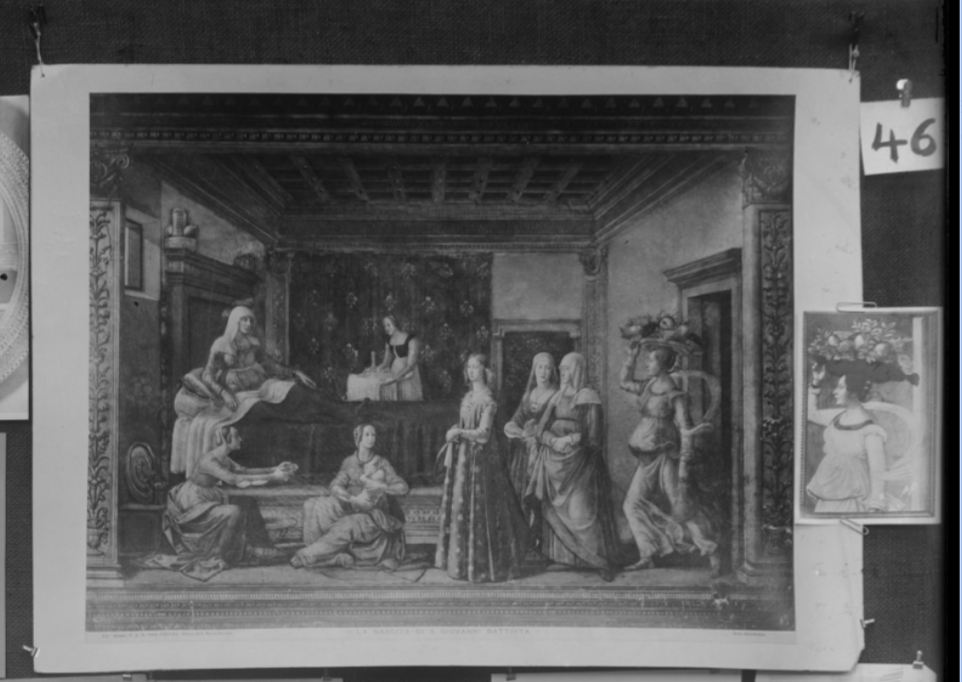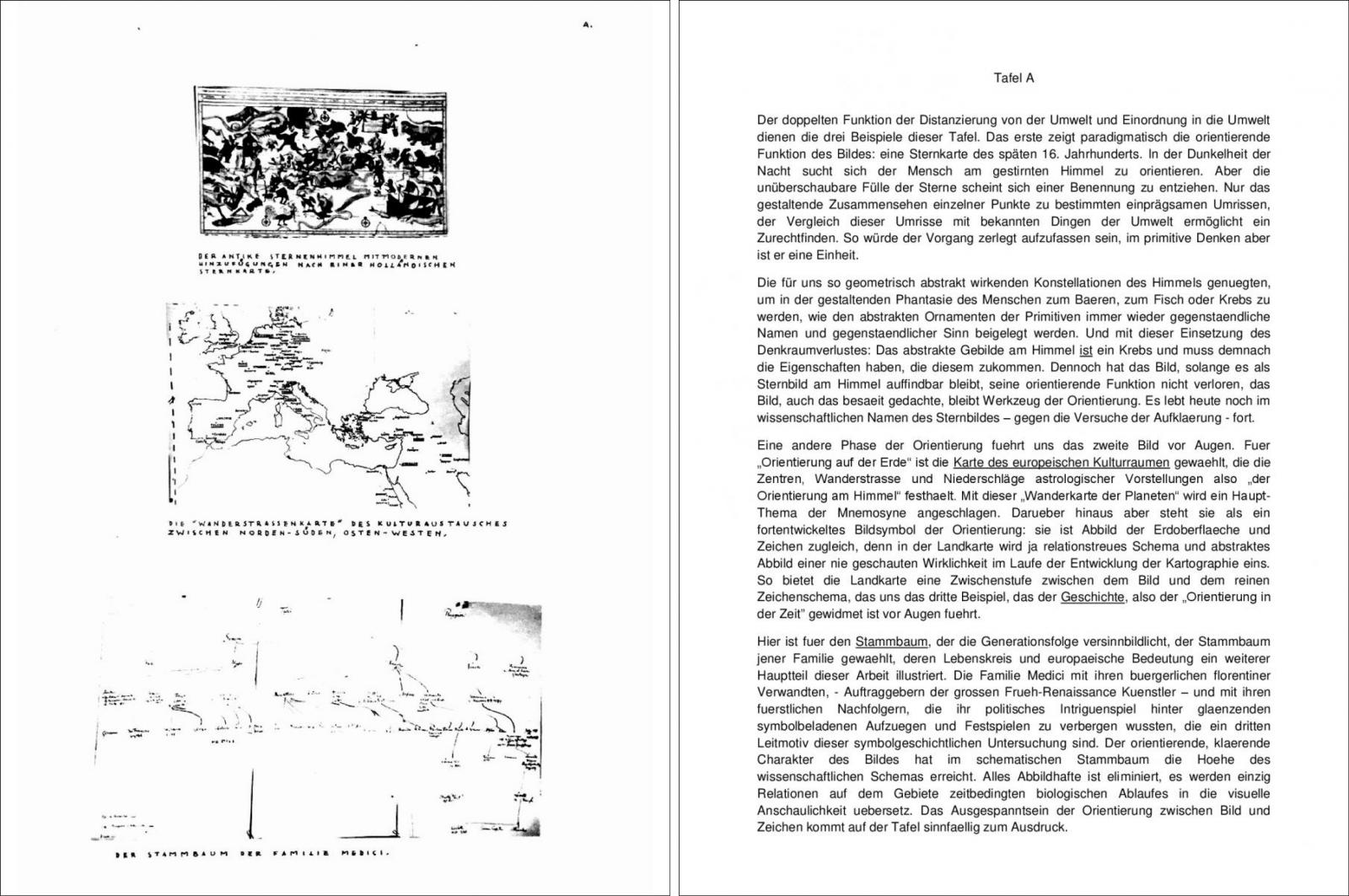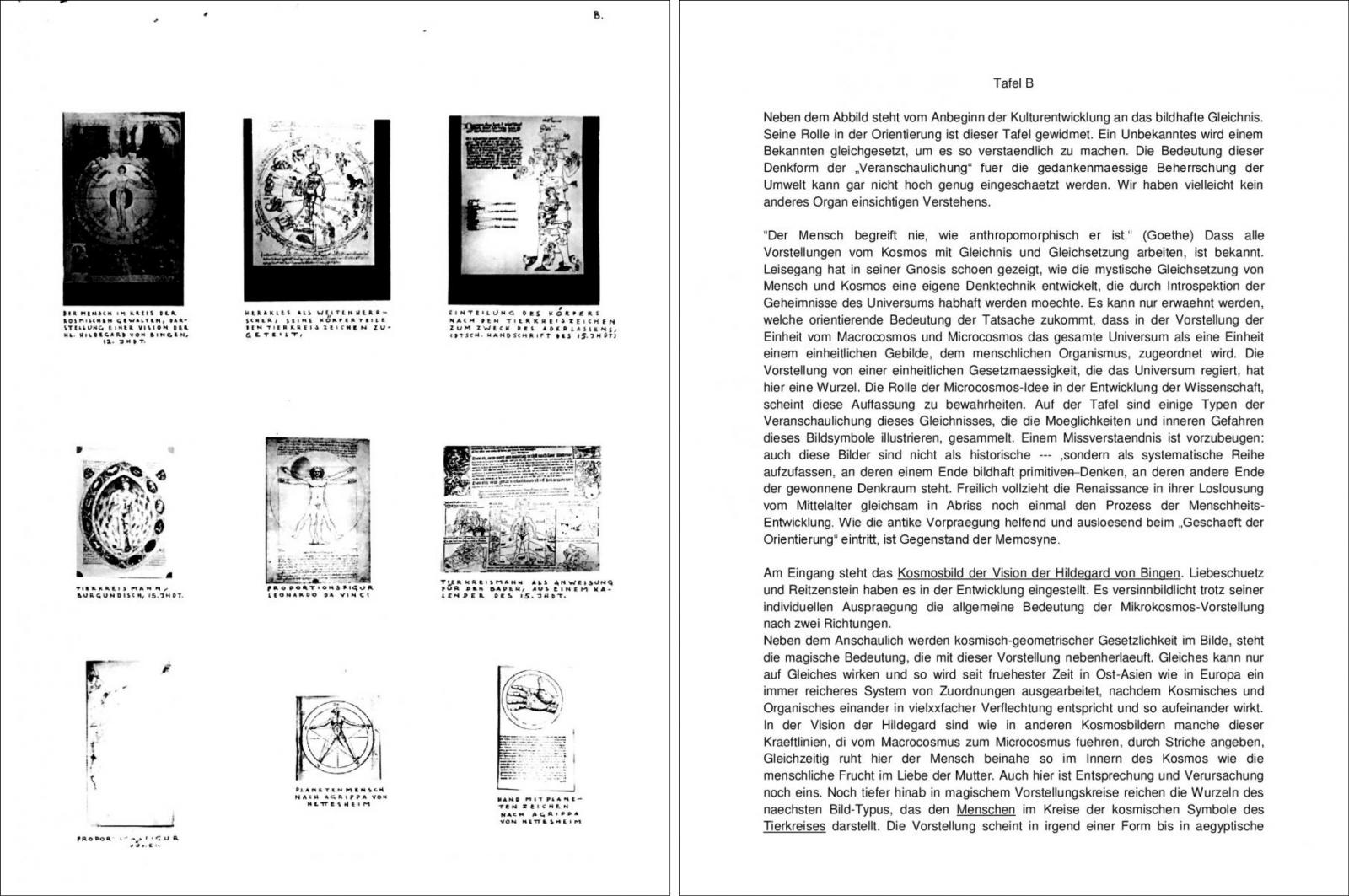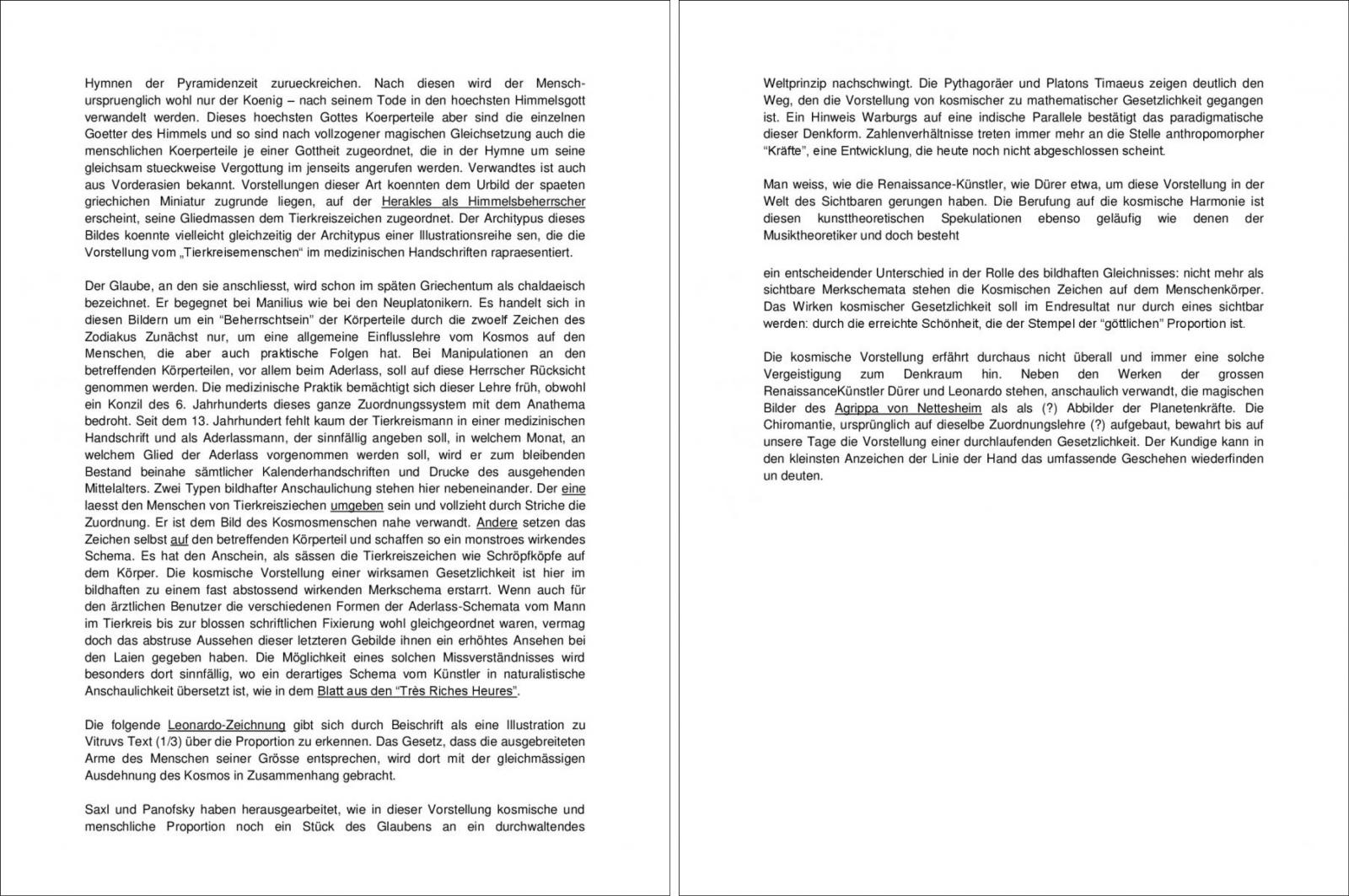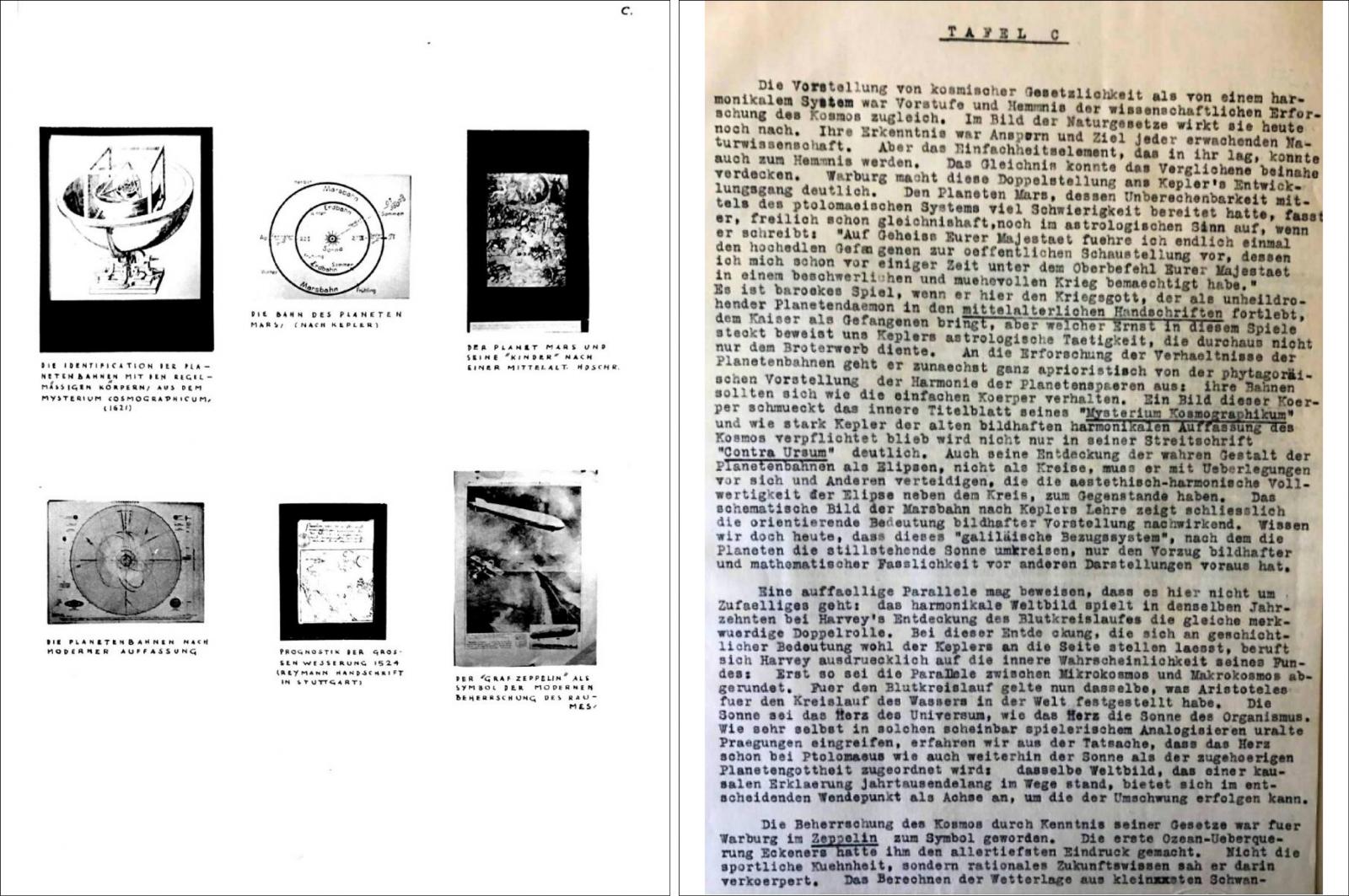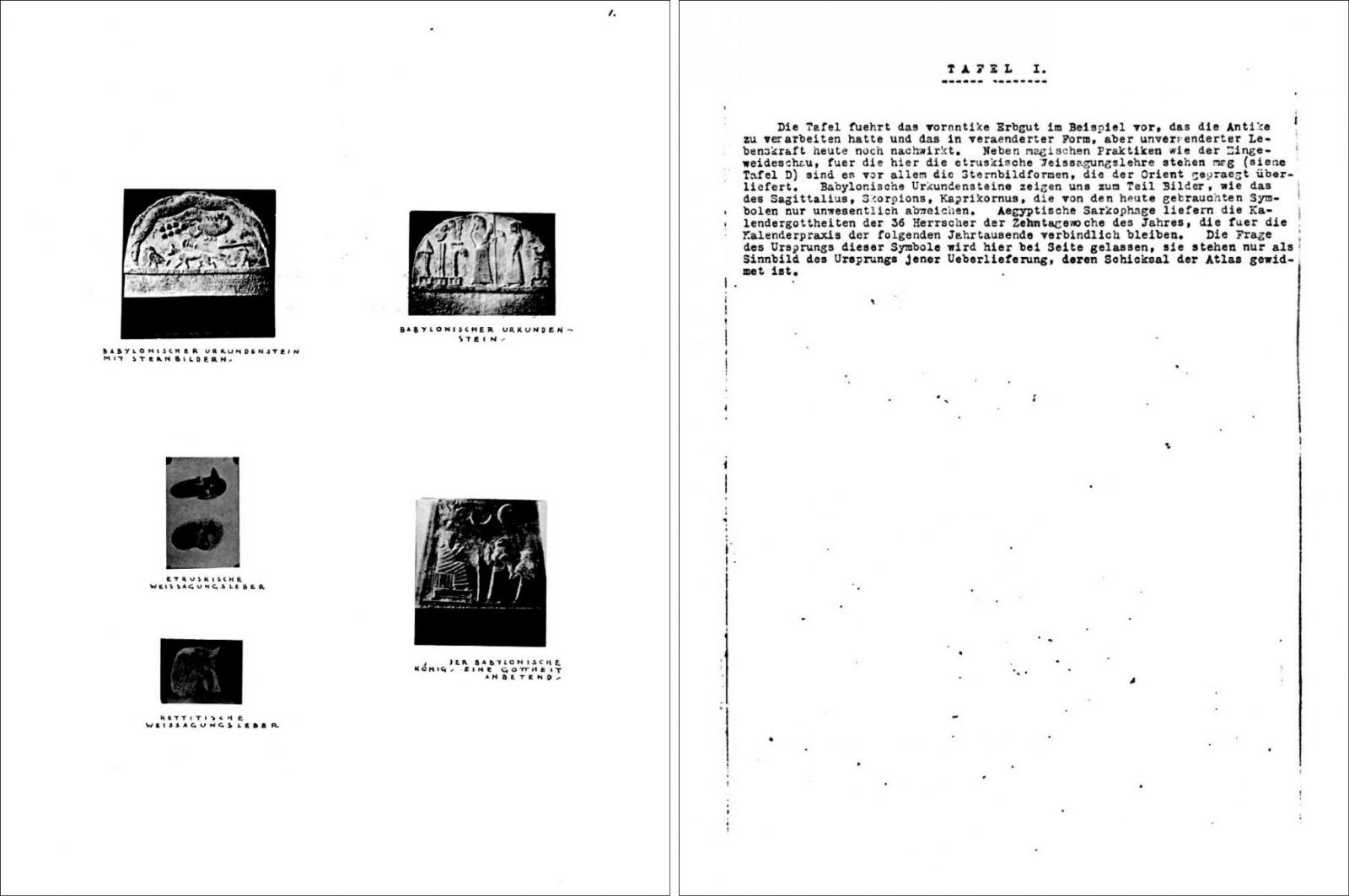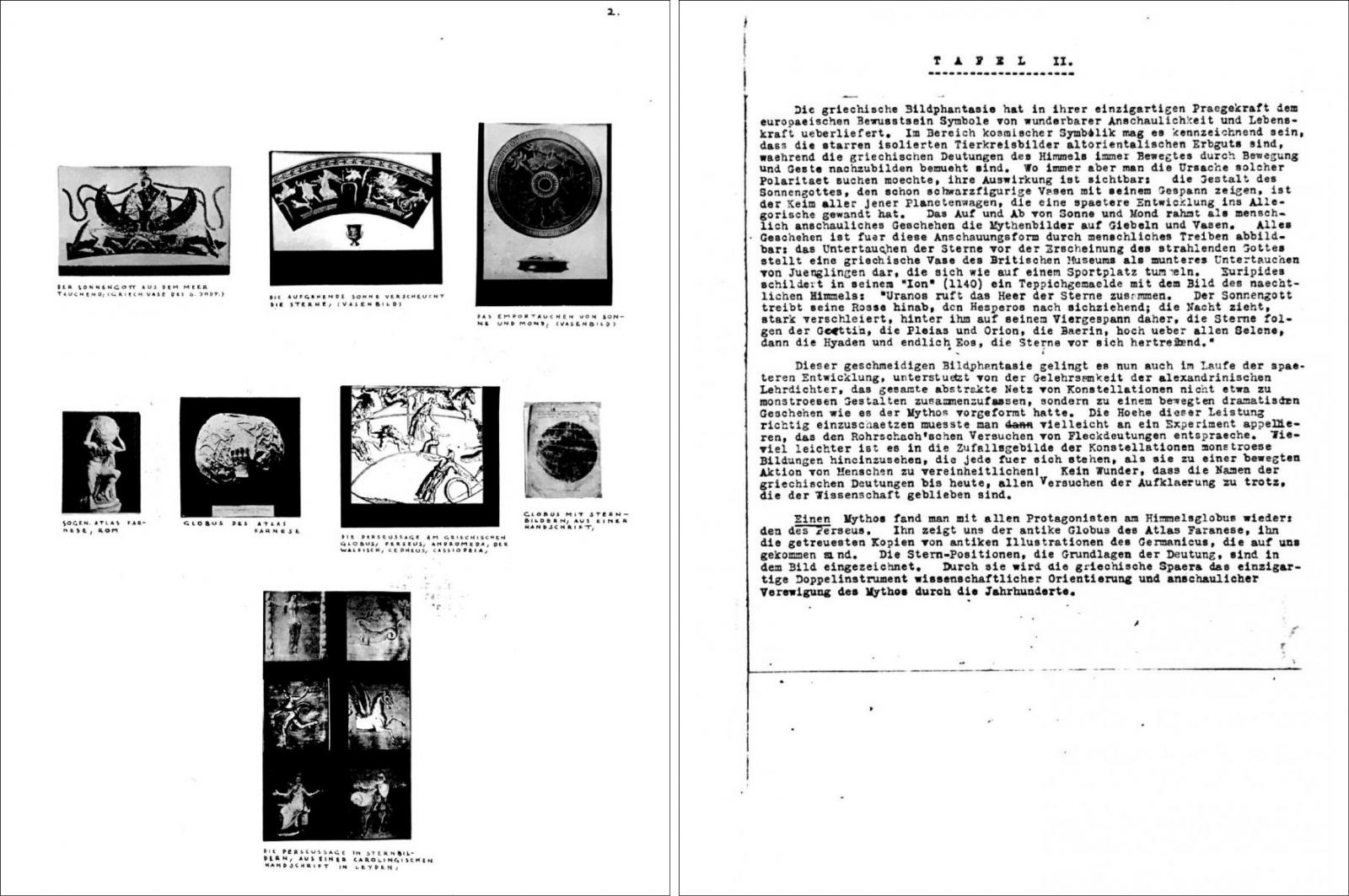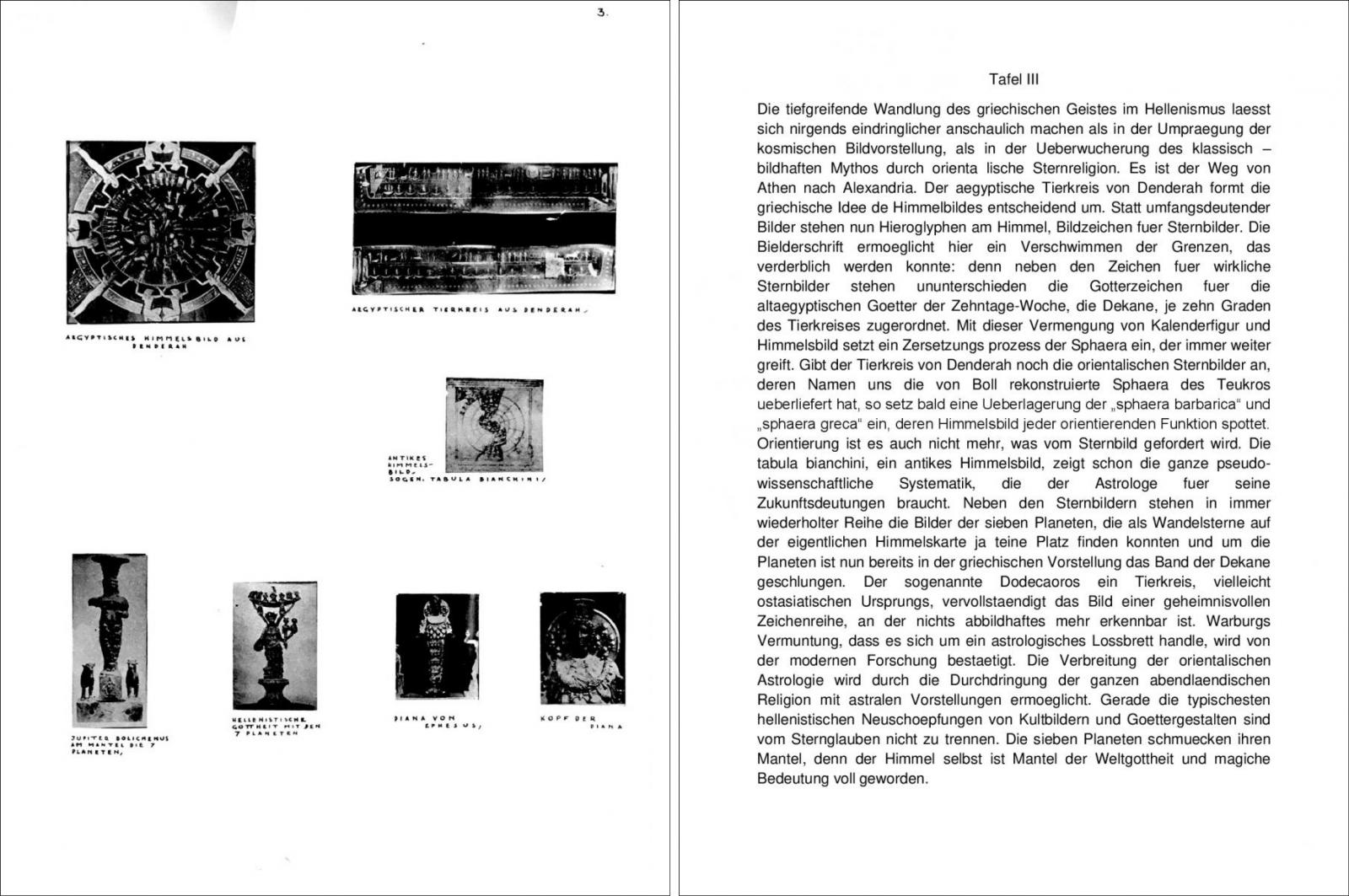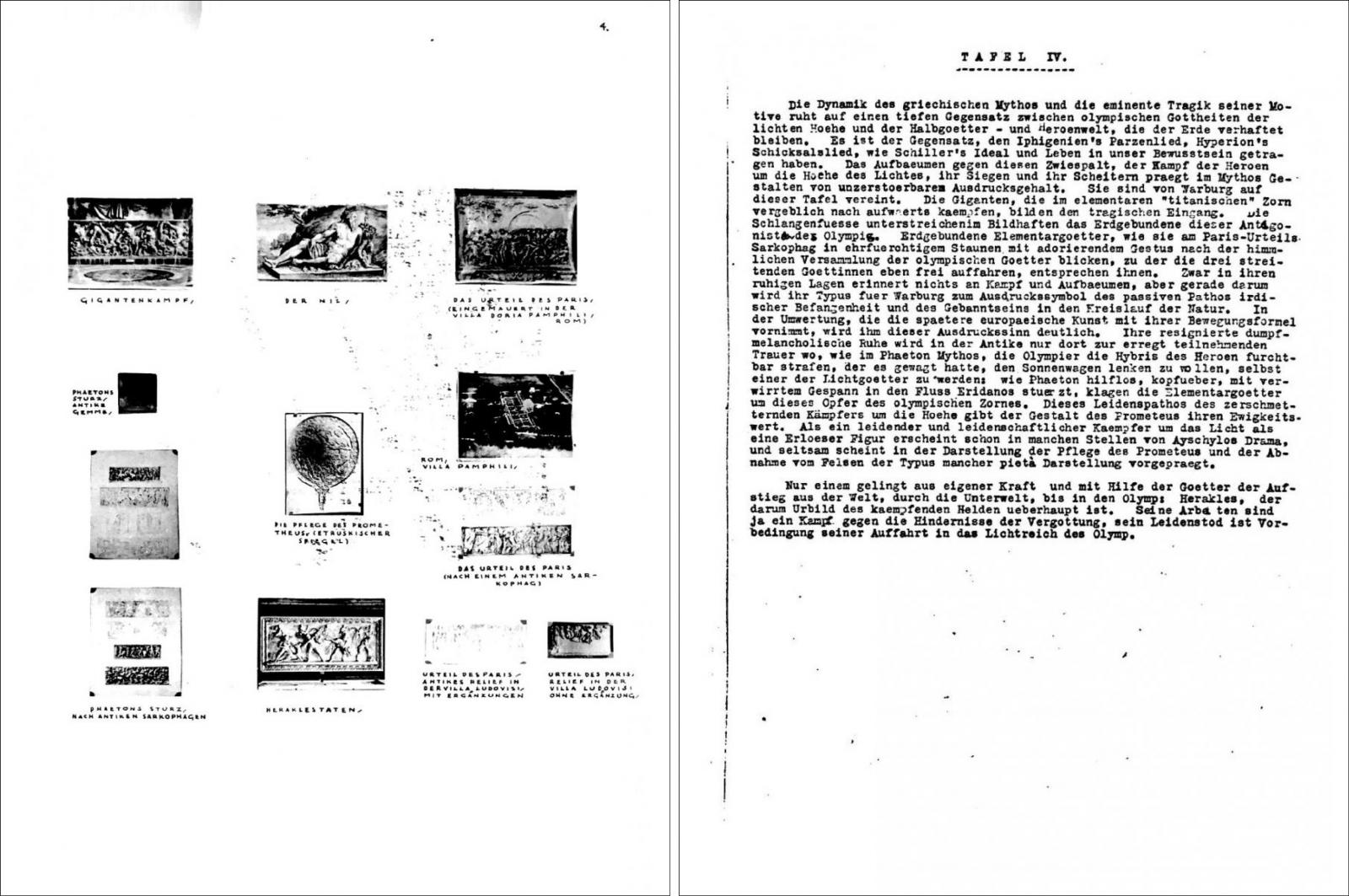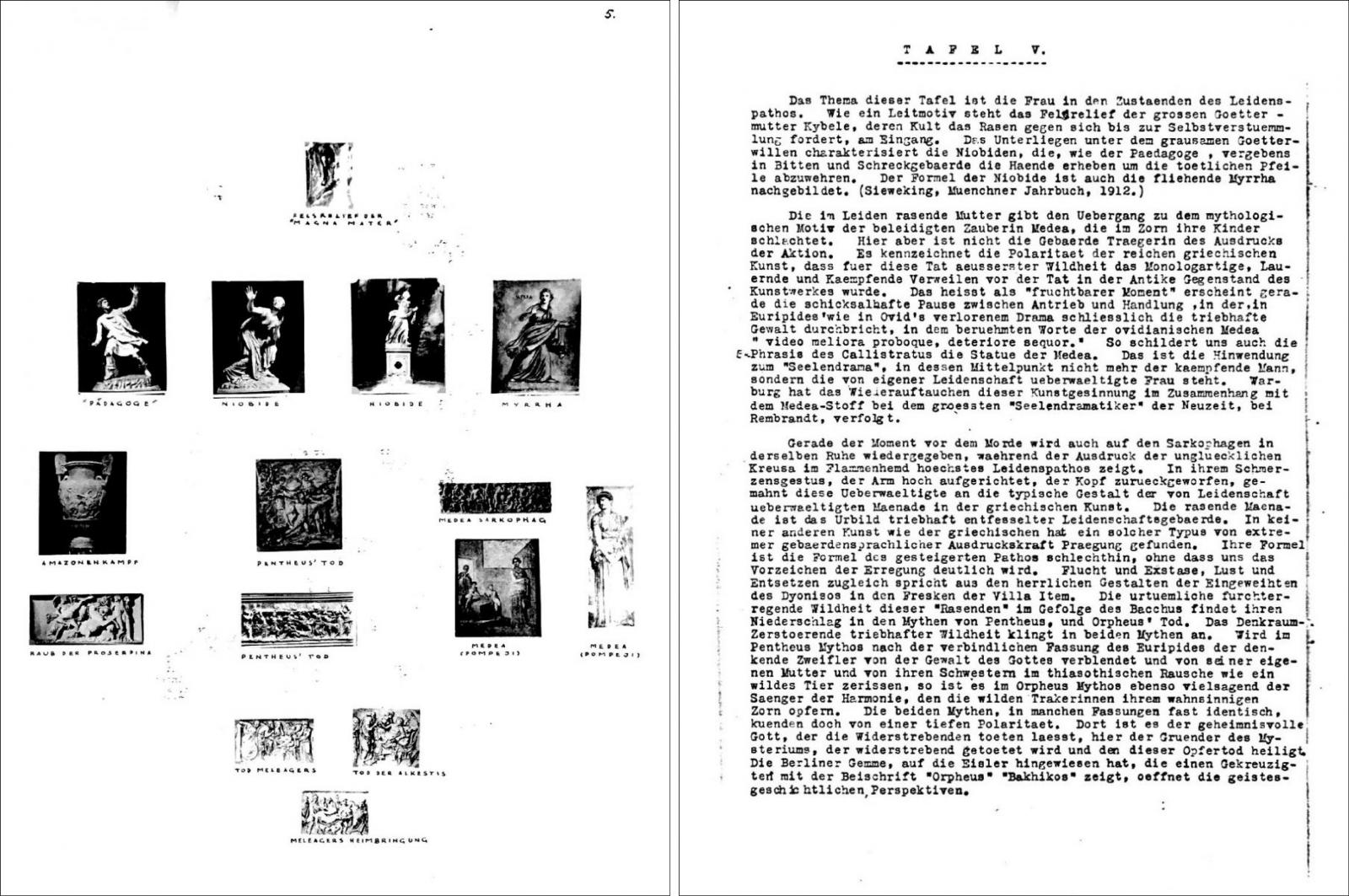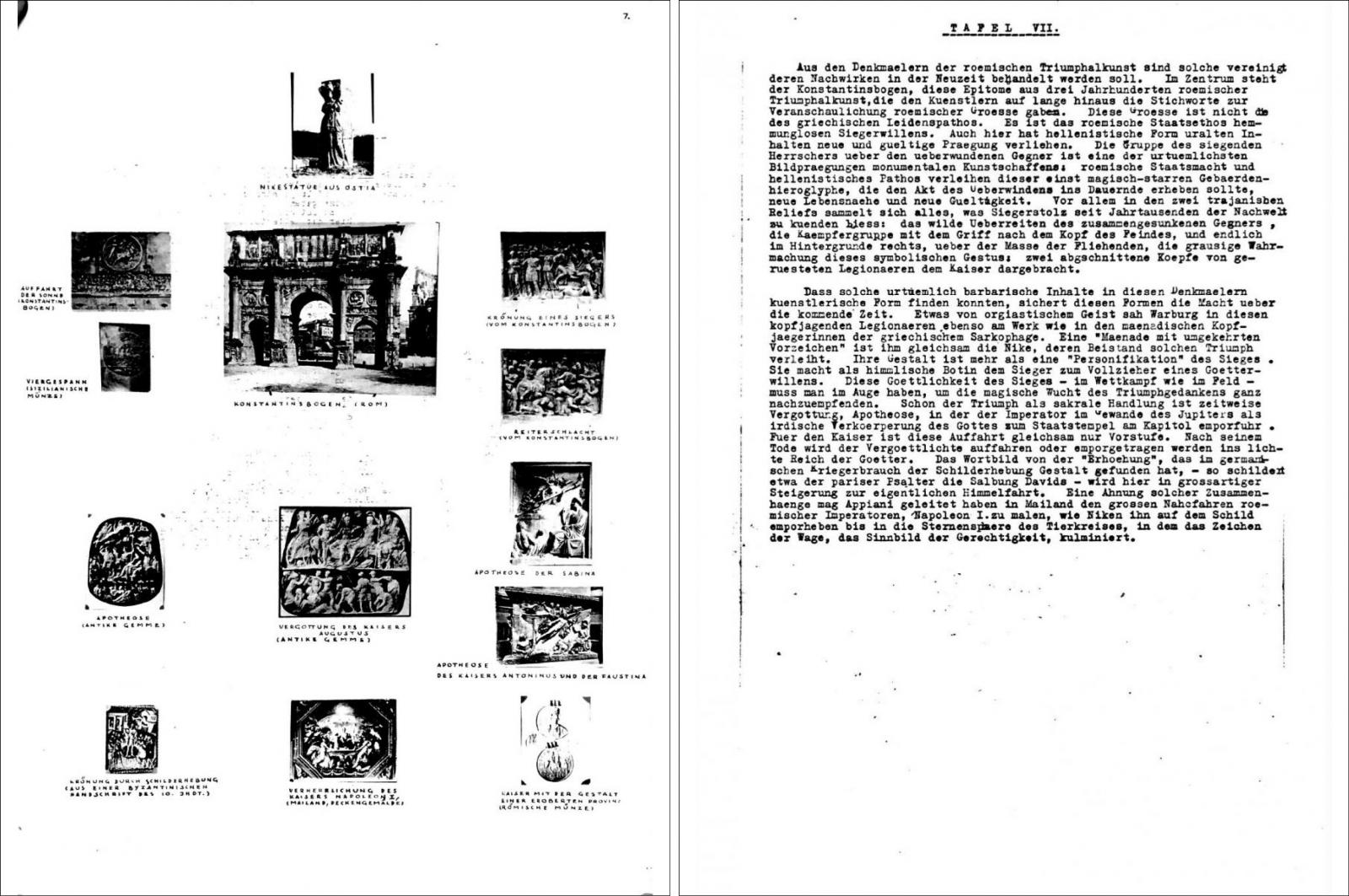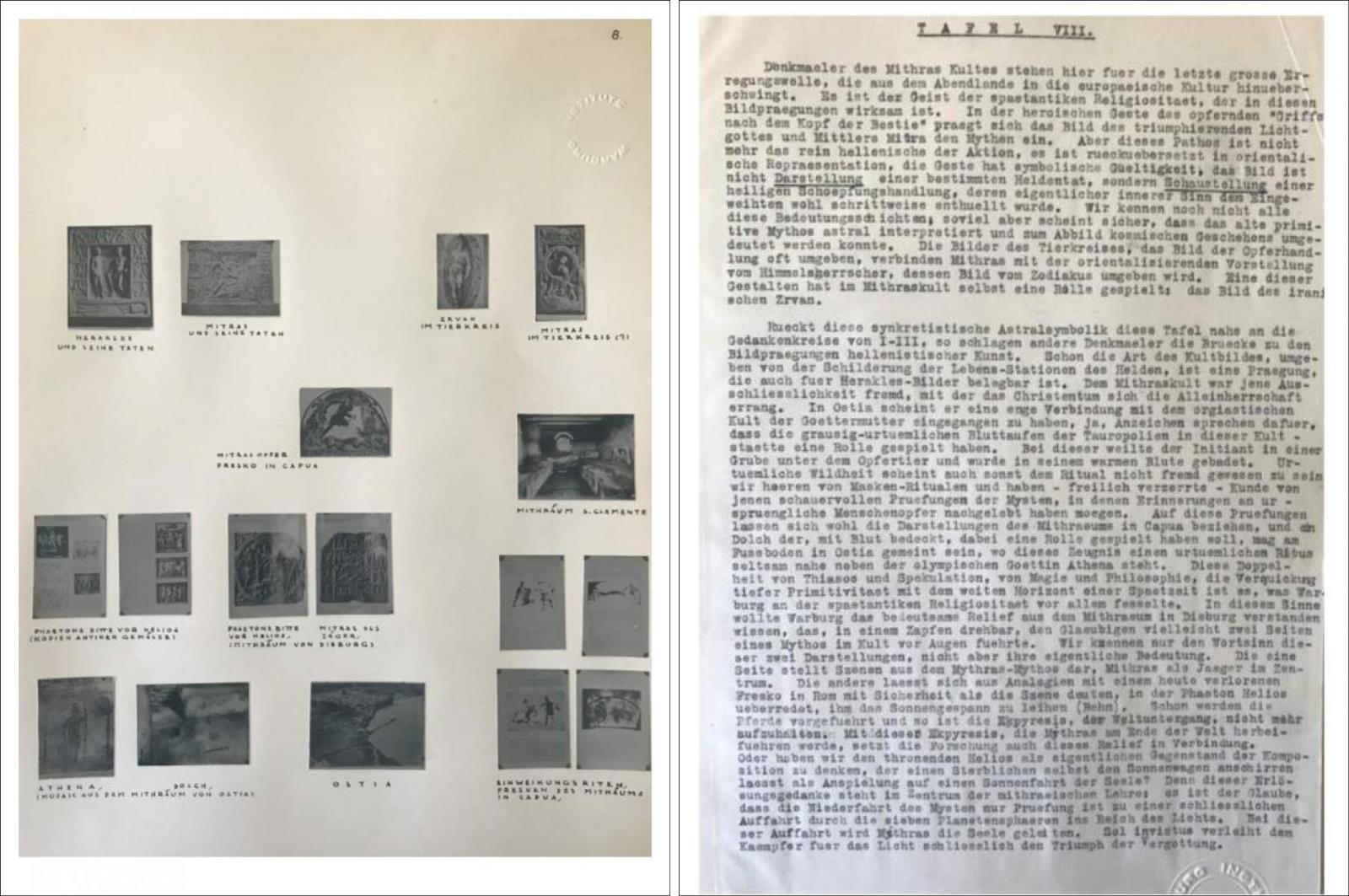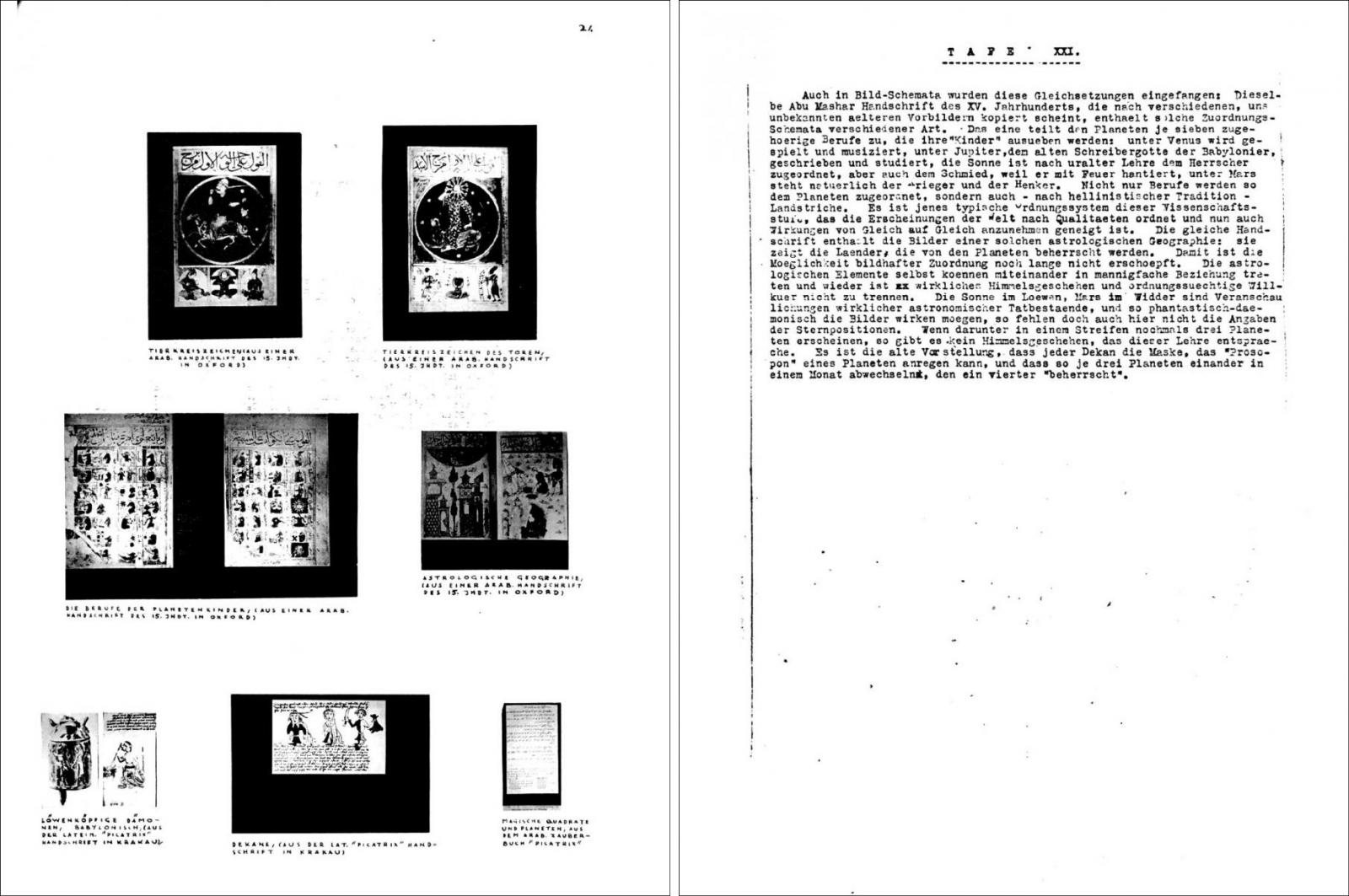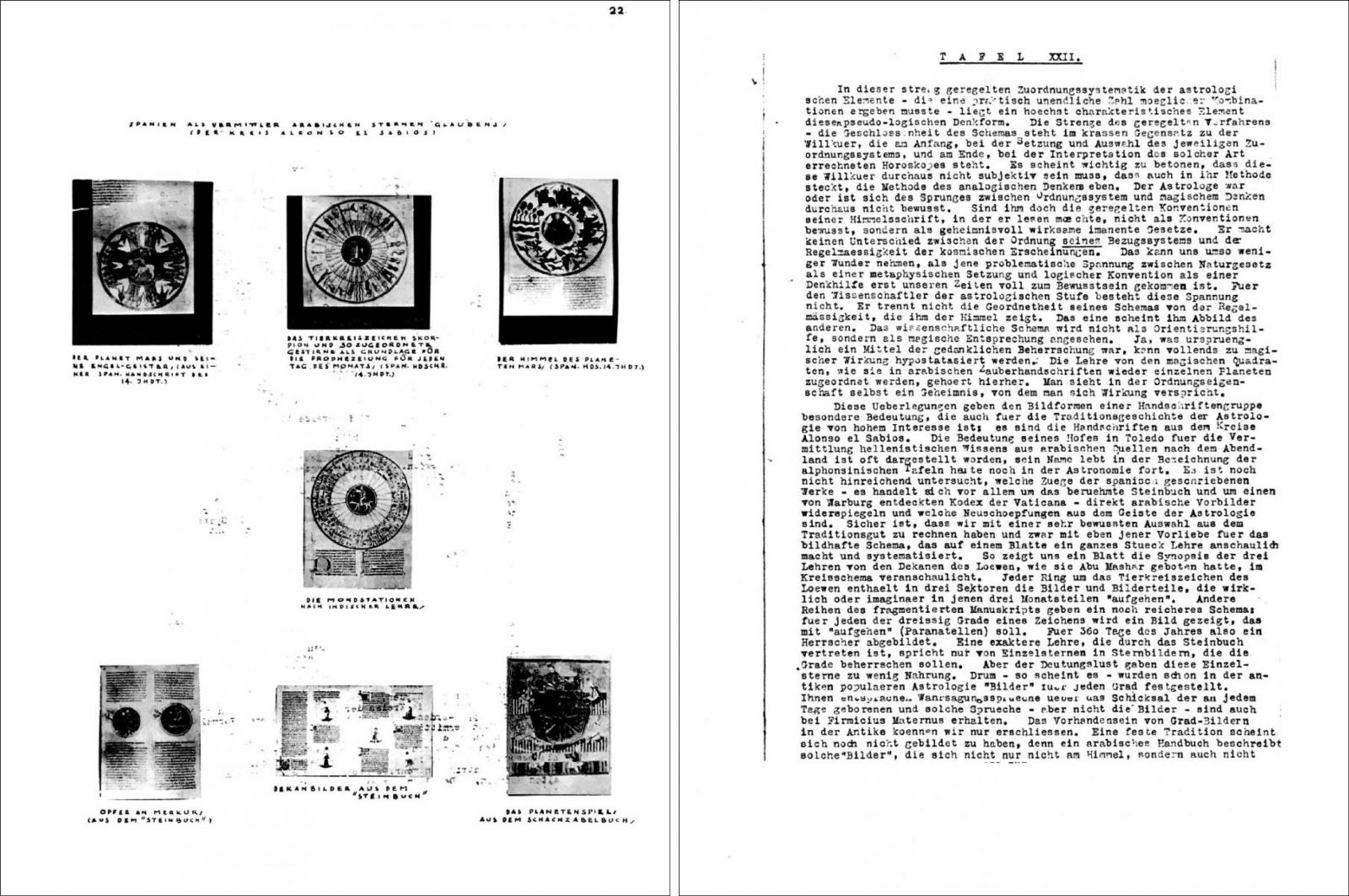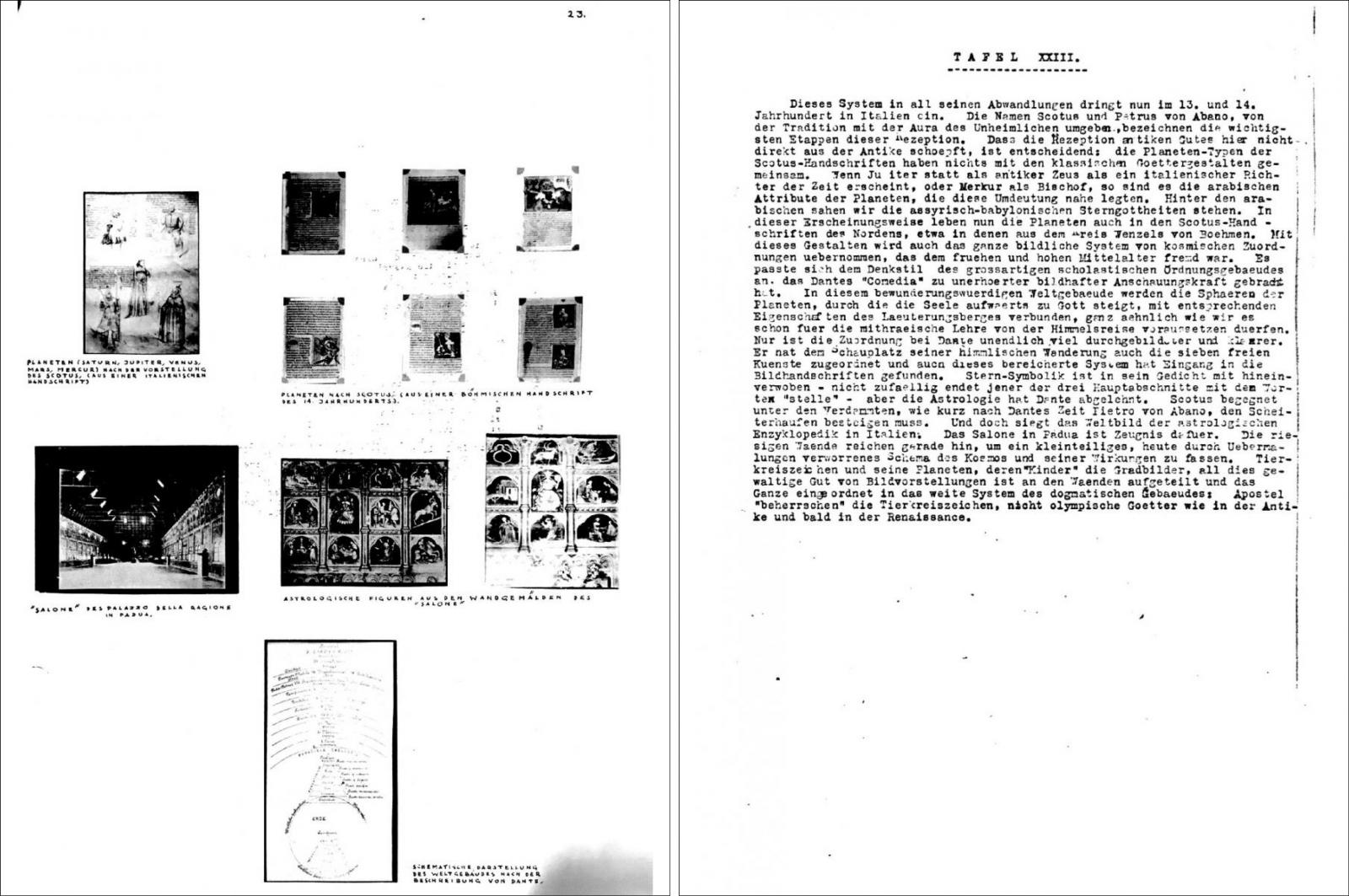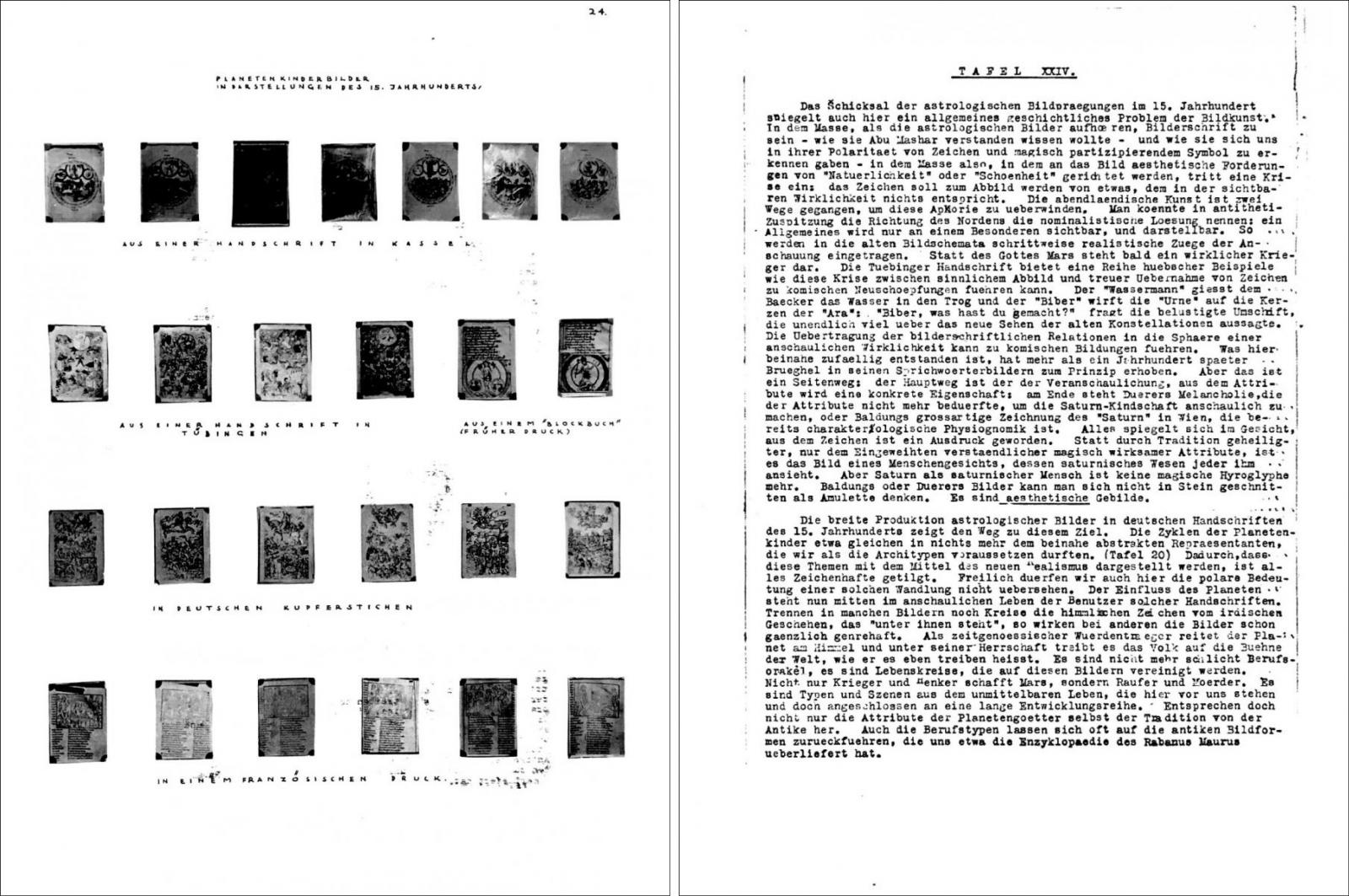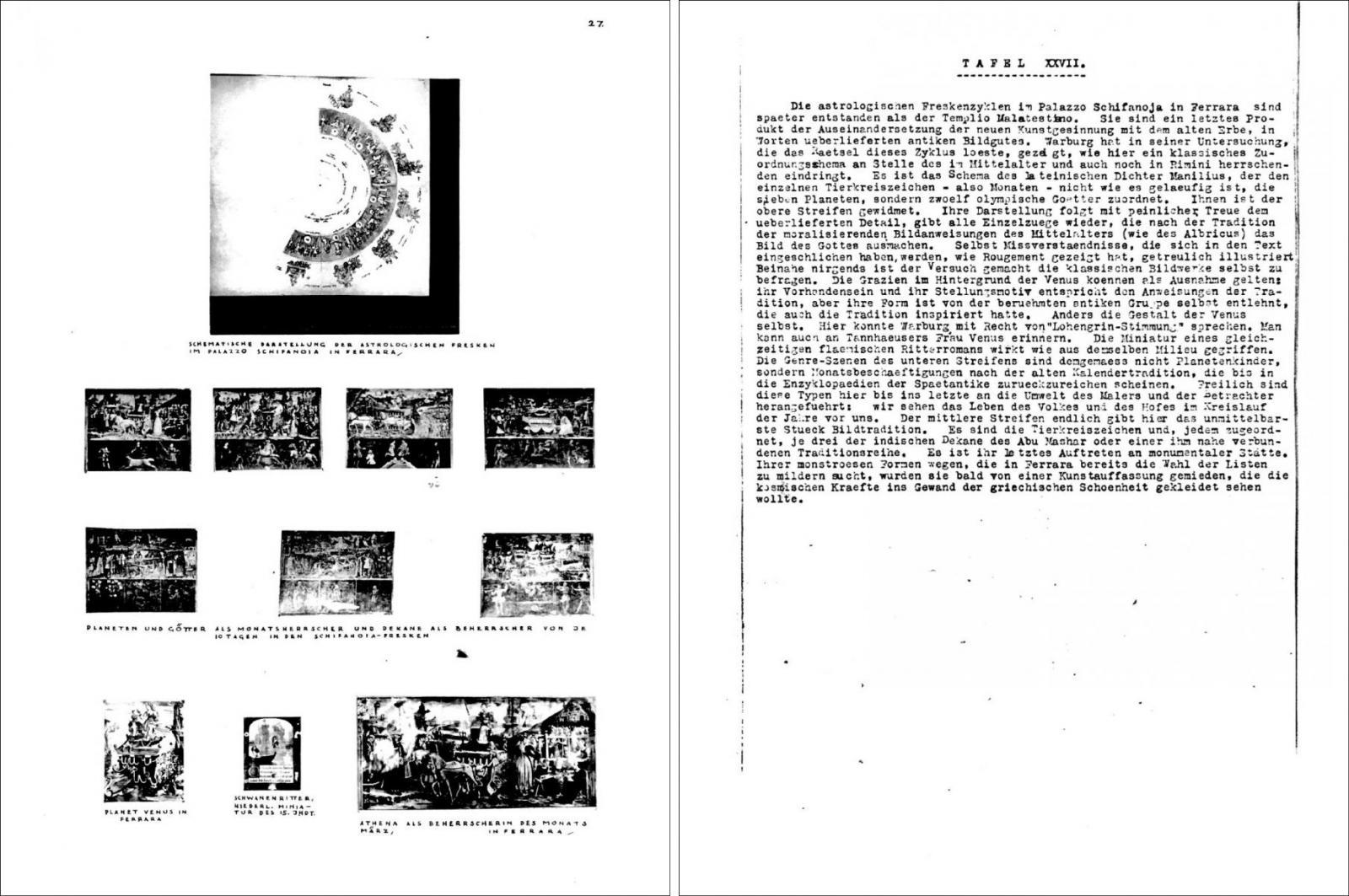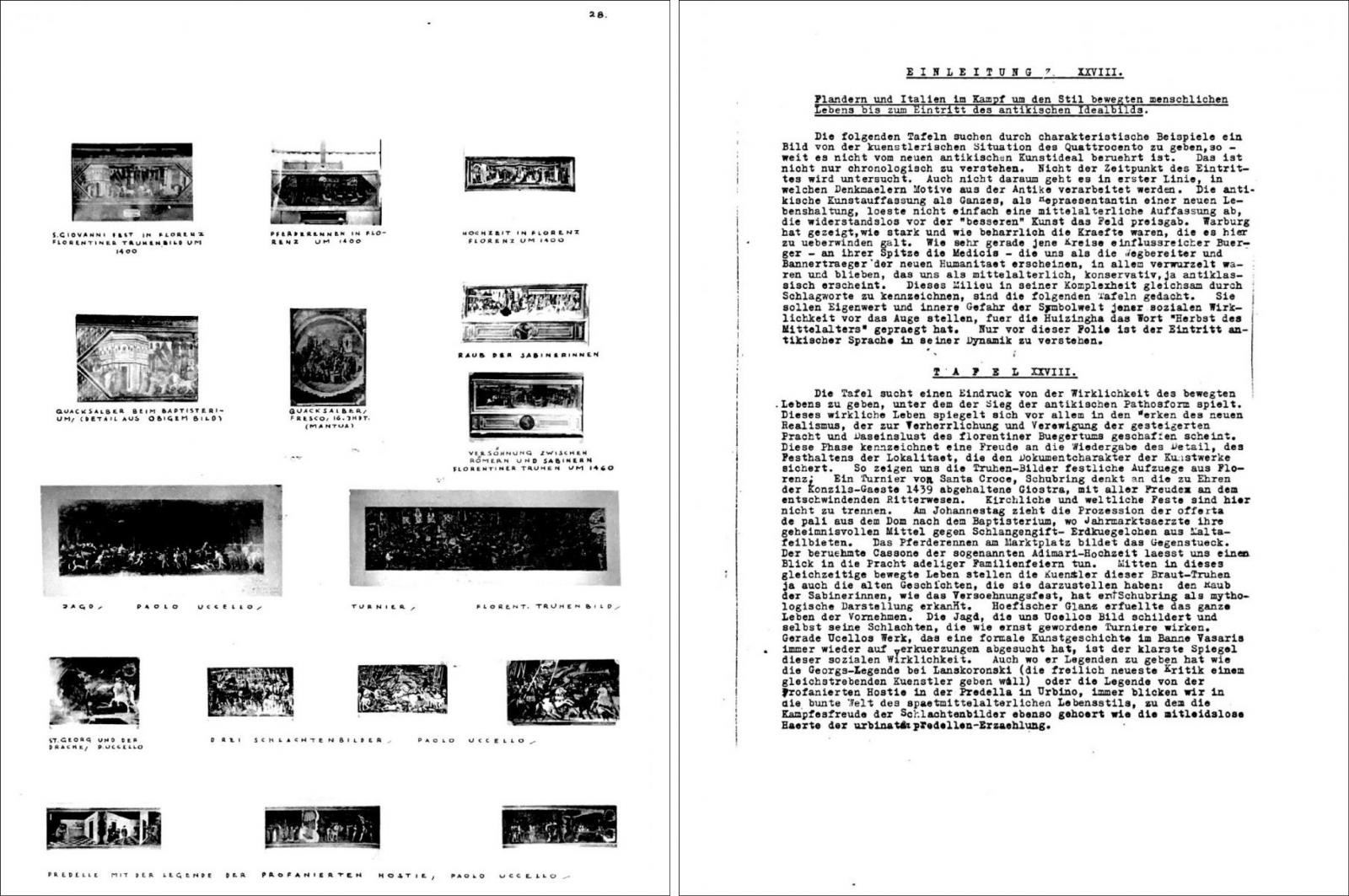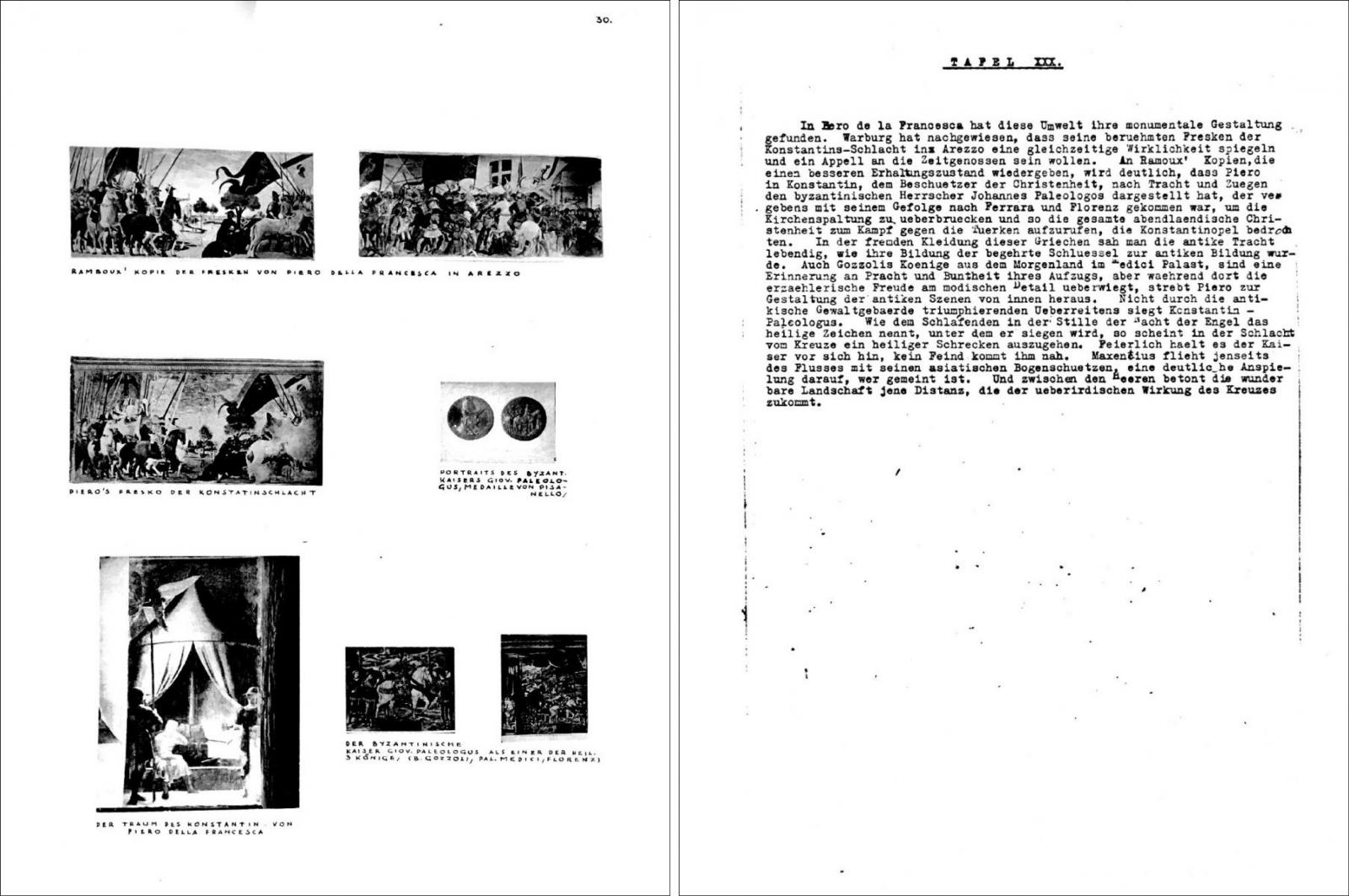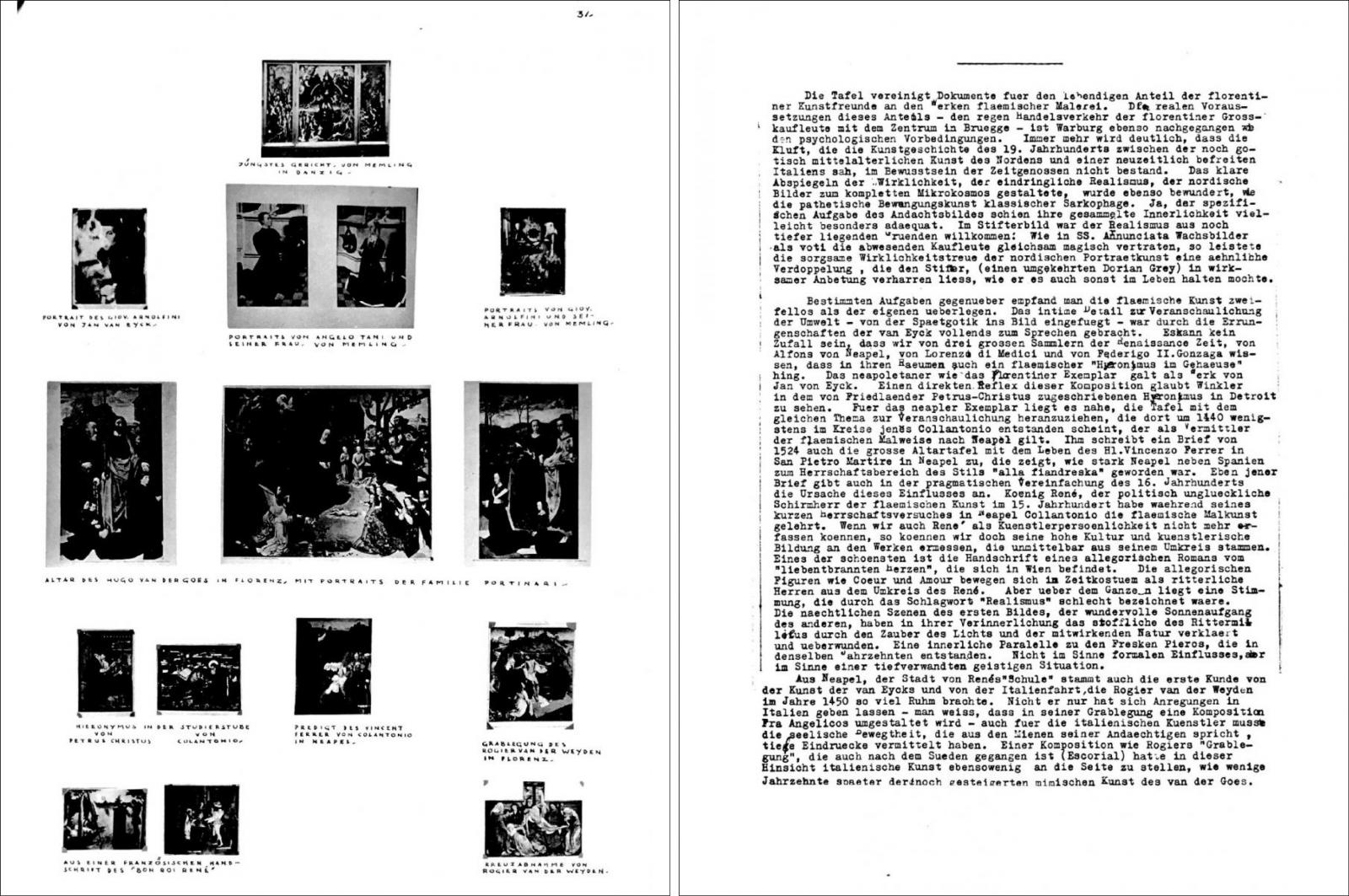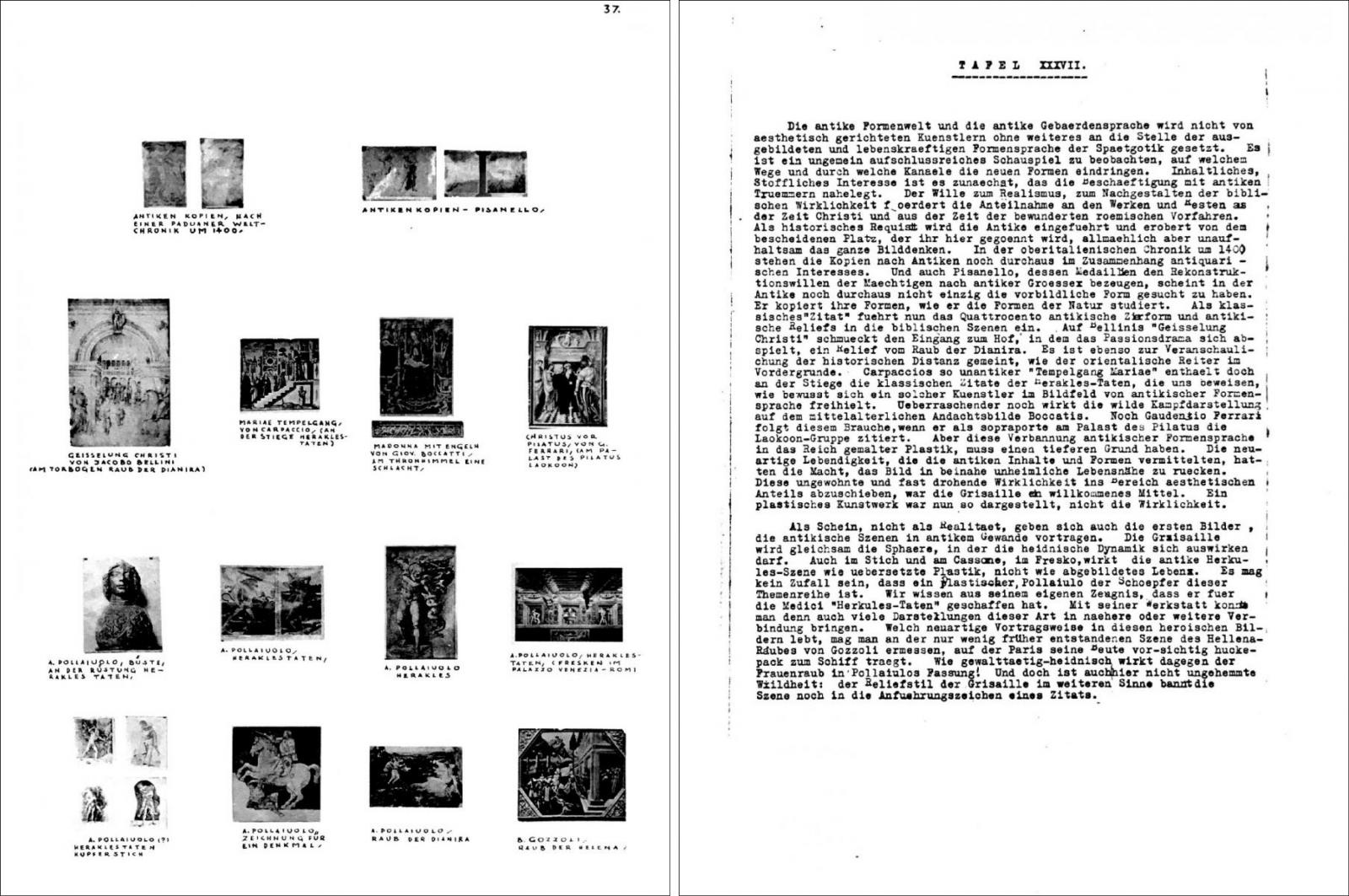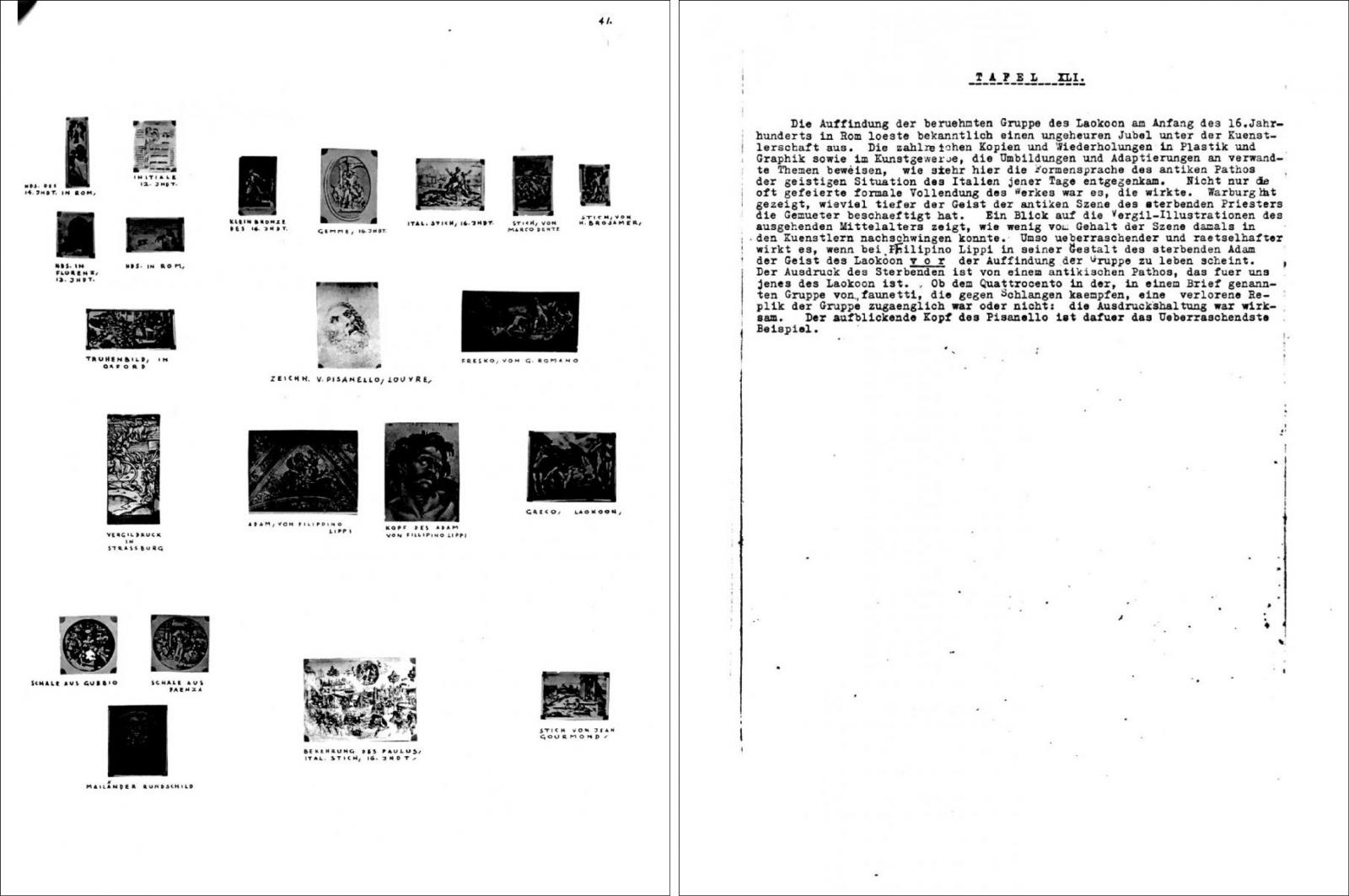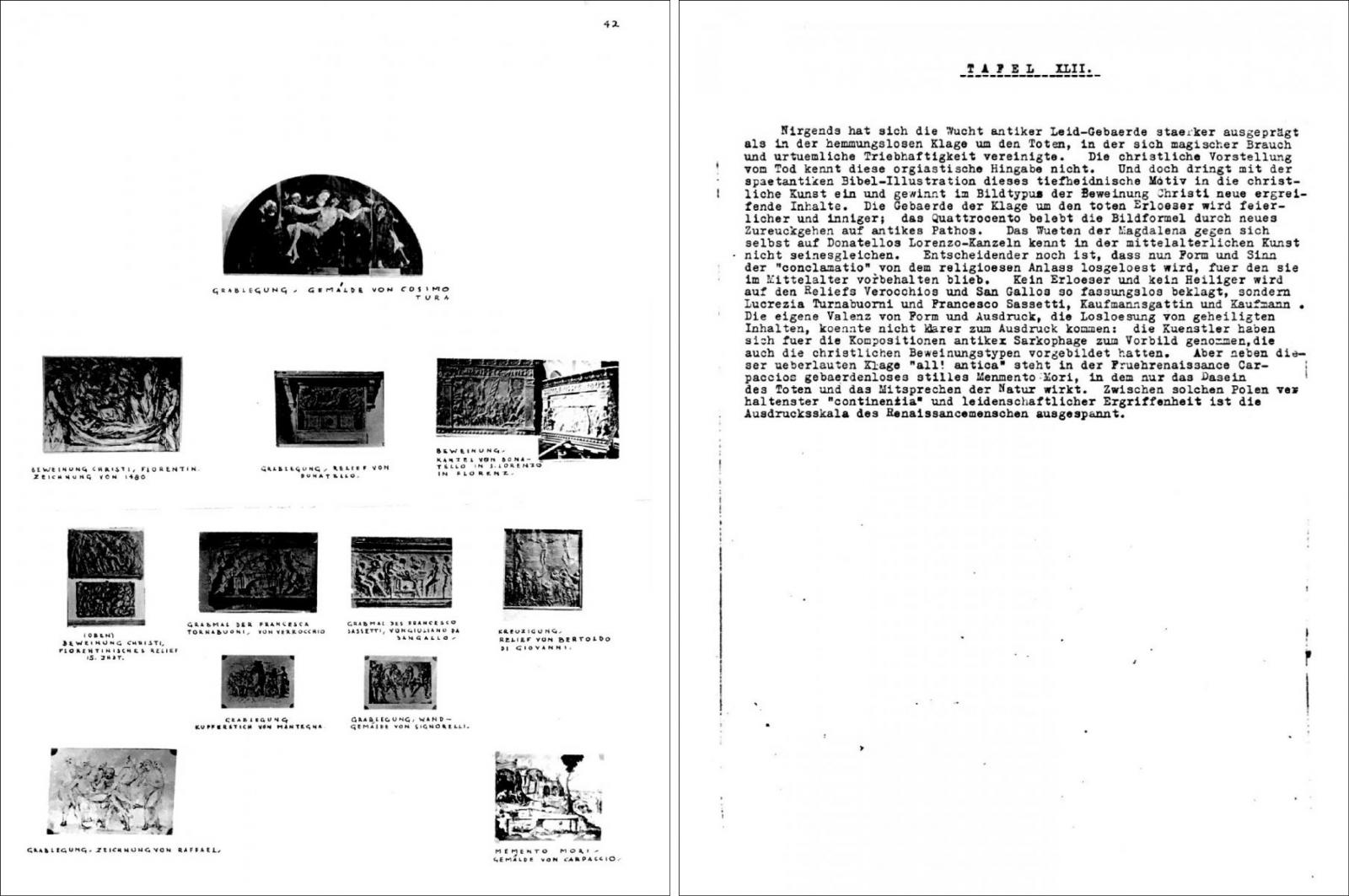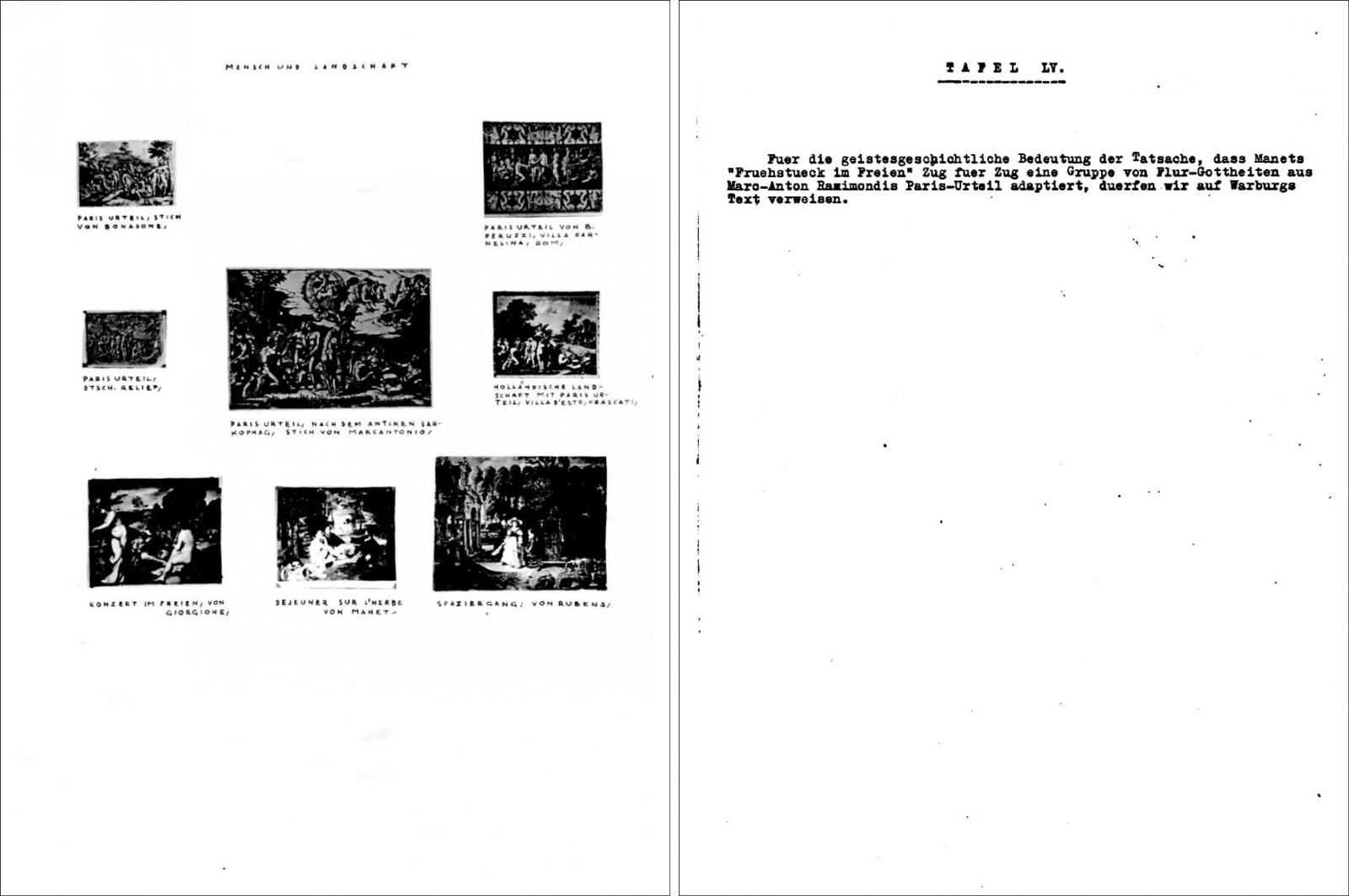Ernst H. Gombrich, Geburtstagsatlas für Max M. Warburg (5 June 1937)
First digital edition
Seminario Mnemosyne, coordinated by Monica Centanni, Anna Fressola, and Maurizio Ghelardi*. English edition by Elizabeth Thomson
English abstract | Italian version (Engramma no. 151)
Geburtstagsatlas für Max M. Warburg by Ernst H. Gombrich (1937)
London, 1937: A young Ernst Gombrich, who had recently joined the scholars of “The Warburg Institute” – still based in South Kensington under the direction of Edgar Wind – was commissioned to produce a private edition of the Bilderatlas: the Geburtstagsatlas für Max M. Warburg, to celebrate the seventieth birthday of Aby’s brother, Max. The undertaking, conceived as a private gift, was probably initiated at the behest of Gertrud Bing and Fritz Saxl, or perhaps at the request of Max himself. In any event, the project clearly met with family approval – almost ten years after Warburg’s death and after the Institute’s eventful transfer to England, they still believed in the possibility of the Mnemosyne project being published.
Preserved in two typewritten copies – one in London, one in Hamburg – the Geburtstagsatlas is still unpublished, and has for decades been consigned to almost total oblivion (see the dedicated page on The Warburg Institute website and, in the Bibliographic Note, the meagre collection of critical reviews).
In this issue of Engramma we present a complete edition of Geburtstagsatlas, obtained by collating the two typescripts; for now, it is a simple reproduction of copies in the form of images, but the Seminario Mnemosyne is working on a digitised version that will soon be published and will be the editio princeps of the “Birthday Atlas”.
Although it is a sort of preparatory paste-up created for a publication that was supposed to remain private, the work reflects, in its general layout, the structure that had originally been designed for the publication of the Bilderatlas – a set of panels, accompanied by concise texts – but at the same time, it differs considerably from the panels assembled by Warburg and collaborators in 1929.
The Zur Mnemosyne text of the Introduction and all the accompanying texts of the individual panels are written in German, typed with an English typewriter, which was not equipped with a typographical font set with German diacritical signs (vowels with Umlaut, and scharfes S).
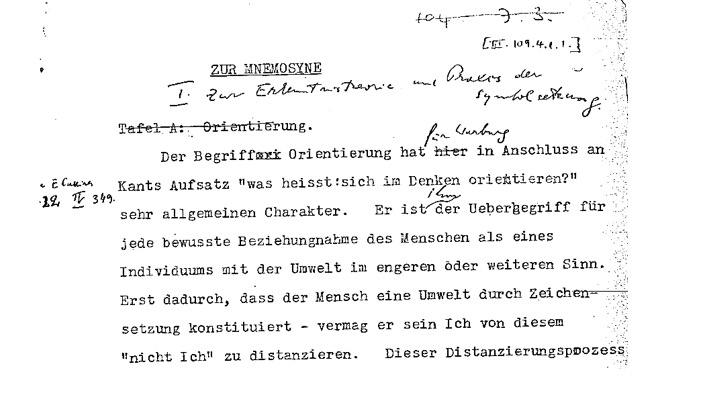
1 | The preparatory draft of the Introduction to Geburtstagsatlas, in addition to the ink-written corrections, demonstrates that a typewriter without the diacritical signs peculiar to German (Ueberbegriffe pro Überbegriffe; dass pro daß...) was used.
Basically, in addition to some obvious misprints due to the ‘artisanal’ nature of the work, the enforced transliteration from German sounds like a graphic scar that is a tell-tale sign of the delicate state of exile that the Warburg-Kreis was experiencing during those years, and the difficulties that the refugees from Hamburg had in finding a worthy home in London despite England’s capital city having generously welcomed the scholars and their precious materials.
As a premise, Gombrich offers a short and condensed introduction, and from the outset, this text poses an important critical query: despite having at his disposal the Einleitung for the Bilderatlas written by Warburg in 1929 (see in Engramma no. 142 the first digital edition, with an English translation by M. Rampley), Gombrich made a marked departure, both conceptually and terminologically, from the approach that Warburg had wanted for his opus (see in this issue of Engramma, Ernst H. Gombrich, To Mnemosyne). In particular, in the Warburg Institute Archive, two testimonia of the Introduction to Geburtstagsatlas are preserved: the preparatory draft, type-written, with various corrections and ink-written marginalia by Gombrich [WIA.III.109.4] and the final version, type-written, which partially includes the corrections made by Gombrich [WIA.III.109.5.1].
The Birthday Atlas contains 24 reconstructions of some of the 63 panels in the final version of the Bilderatlas Mnemosyne (which had been photographed before the materials were transported to the U.K., and which therefore Gombrich had at his disposal). The numbering of the individual panels is as follows:
A • B • C • I • II • III • IV • V • VII • VIII • XX • XXI • XXII • XXIII • XXIV • XXV • XXVII • XXVIII • XXX • XXXI • XXXVII • XLI • XLII • LV
When considering the individual panels, Gombrich’s numbering agrees with the numbering of the corresponding panels of the 1929 Mnemosyne version, and respects the gaps in the continuous numbering (between Panel VIII and Panel XX, for example). The correspondence of the numbering is, therefore, accurate, or almost (an exception is the numbering of Laocoön: 41 for Gombrich; Panel 41a in the 1929 Mnemosyne, but as can be seen from the 41a formula, the numbering was evidently anything but provisional). However, in the Gombrich version, at least in the typewritten package to which we refer, the choice of inclusions and exclusions is not explicit: as can be seen in the Geburtstagsatlas, only the opening panels, Tafeln A, B, C created by Warburg and collaborators between September and October 1929 are included – (on the genesis of the ABC block of the Bilderatlas Mnemosyne see in Engramma no. 125, “Symbol tut wohl!”, Il simbolo fa bene! Genesi del blocco ABC del Bilderatlas Mnemosyne di Aby Warburg by Silvia De Laude). The final panel of the selection proposed by Gombrich – Tafel 55 – is the panel dedicated to Warburg’s research on Manet. The Geburtstagsatlas thus covers a narrower historical and geographical period than the final version of Mnemosyne (which in the last groups of panels, covers Rubens and Rembrandt, before moving to strictly topical concerns), but nevertheless it coincides with the chronological period of which Warburg and Bing write in Roman Diary, “from Babylon to Manet”:
In the afternoon, I set up Mnemosyne on two hessian supports. Now there is an overview of all architecture from Babylon to Manet: so it can be[et1] subjected to a ruthless critique.
A. Warburg, February 10, 1929 (A. Warburg, G. Bing, Diario Romano (1928-1929), ed. M. Ghelardi, Torino 2005, 53; Eng. trans. by E. Thomson).
It is not clear, however, why almost all the panels dedicated to the Florentine Renaissance were excluded (Panel 39, e.g. dedicated to Botticellian themes that might have had textual references to Warburg’s essay on Botticelli and might have been very useful for the accompanying captions). In short, the significance of Gombrich’s choices, and the fact that his version of the Atlas stops at Manet, certainly deserves further study – indeed, we hope soon to undertake a detailed study of the relevant archive materials.
Each panel is accompanied by a succinct but dense explanation – a sort of long caption that provides the sense of the ‘theme’ of the panel.
Many images were eliminated – 280 in the 24 panels of Gombrich’s version compared with about 2,000 images that Warburg planned to include in the Atlas in April 1929:
Mnemosyne: the awakening of the pagan gods during the European Renaissance as an expressive value of energy. An attempt at an art-historical science of civilisation.
Two volumes of text. In addition, an atlas with about 2,000 illustrations edited by A. Warburg. Indices by Gertrud Bing.
A. Warburg, April 8, 1929 (A. Warburg, G. Bing, Diario Romano (1928-1929), ed. M. Ghelardi, Torino 2005, 98; Eng. trans. by E. Thomson).
2 | Mnemosyne Atlas, Panel 46: Domenico Ghirlandaio, The Birth of Saint John the Baptist, fresco, 1486, Firenze, Santa Maria Novella Church, Tornabuoni Chapel; detail of the ‘basket-carrying nymph’ from a workshop copy.
Even with regard to the composition of the individual panels, Gombrich performed a distinct process of selection. He eliminated different materials from each panel, particularly images that did not appear to be clearly related to the ‘theme’ of the panel, reducing the number of images to about 10 per panel: all the materials that appeared to Gombrich to be eccentric were purged; however, the reccurring, magnified details of the images, a device that we could define as ‘zoom & focus’ to which Warburg often resorted, were excluded, sometimes complicating it with the variant of cropping the detail not from the original work but from a copy (e.g. on Panel 46, see figs. 3 and 7: the first is Ghirlandaio’s Birth of Saint John the Baptist in Santa Maria Novella in Florence; the second is the detail of the ‘basket-carrying nymph’ from a workshop copy). The effect that Warburg achieves using this type of device is doubly hermeneutic: not only does he focus attention on the detail from which the thematic thread of the assemblage starts and around which it unfolds; he also picks up the theme of the fortune of the images, not only in terms of reusing models in an erudite manner, but also and significantly, in terms of their serial dissemination, which always underlies Warburgian discourse.
Gombrich paginates the surviving images in an orderly manner on a white background, in a structured and hierarchical way, radically modifying spatial relations and formats. The regular resizing and the orderly position of the images are reminiscent of the ‘thematic’ panels as we see them proposed in the first installations at the Warburg-Haus in Hamburg (1925), in the very first panels that were a sort of “incunabulum” of Mnemosyne. However, from the outset, the background of the assemblages for Mnemosyne was black, and would remain so in all subsequent versions.

3 | Hamburg, 1925: Incunabulum of the Bilderatlas.
From the left: A view of all the panels in the Oval room of Warburg-Haus; ‘Mänade und Satyr’; ‘Klage’.
The choice of the white background is, therefore, to be entirely attributed to the general process of clarification – conceptual and graphic – that Gombrich carried out on the materials of the Bilderatlas.
As is clear from the accompanying texts, each panel focusses on a single theme, creating a linear and sequential structure that traces the history of a “cultural evolution” that views man – as Gombrich writes in his Introduction – giving shape to the world that surrounds him by placing signs, thus ‘distancing’ his ‘I’ from the environment that surrounds him, from the ‘not me’: a process of ‘distance-taking’ which – as Gombrich observes – Warburg called Denkraum and which he interpreted as “the constitutive act of creating a space for thought for all ontogenetic and phylogenetic development”, in the sense of an “achievement of distance from the surrounding world”.
In his Bilderatlas, Warburg graphically translated his concept of ‘space for thought’ into the framing of the panel and the spacing between one image and another – they are never homogeneous or regular. As can be seen in the Geburtstagsatlas, on the other hand, Gombrich adopted a style of layout in which the Denkraum between the individual and the objects of the world, but also, more visibly, the spacing between one image and another, have pre-set, regular and orderly measurements. In fact, in the previous layout of the panels in 1937, Gombrich preempted the prejudice that would permeate his An Intellectual Biography of 1970 – the notion of Warburg being not only psychologically shaken and broken, but methodologically fragmented, unintelligible, and with no procedure for re-ordering his montages (and his ideas).
Bibliographical note
Contributions that specifically deal with Geburtstagsatlas are quite rare in Bibliography. Some information in Katia Mazzucco, The work of Ernst H. Gombrich on the Aby M. Warburg fragments, “Journal of Art Historiography” 5 (2011); Katia Mazzucco, Images on the Move: Some Notes on the Bibliothek Warburg Bildersammlung (Hamburg) and the Warburg Institute Photographic Collection (London), “Art Libraries Journal” 38/4 (2013). Careful reconstruction of Gombrich’s relationship with Warburg’s legacy, but not specifically focussed on the Atlas, has been proposed by Claudia Wedepohl in Critical Detachment: Ernst Gombrich as Interpreter of Aby Warburg, in U. Fleckner, P. Mack (eds.), The Afterlife of the Kulturwissenschaftliche Bibliothek Warburg. The Emigration and the Early Years of the Warburg Institute in London, Vorträge aus dem Warburg-Haus, Hamburg, Band 12, Berlin 2015, 131-164. Currently there are no precise comparisons between the panels of the Geburtstagsatlas and the corresponding Mnemosyne 1929 panels. Precious notes can be found in the essay by Salvatore Settis, Aby Warburg, il demone della forma. Antropologia, storia, “La Rivista di Engramma” 100 (settembre/ottobre 2012). In Engramma no. 151, we have published an excerptum from Settis’ essay, together with two other notes, edited by Alessandra Pedersoli and Simone Culotta as preliminary introductory essays to a systematic reading of the panels of Geburtstagsatlas 1937 compared with Mnemosyne 1929: Salvatore Settis, Alessandra Pedersoli, Simone Culotta, Esercizi di confronto tra le Tavole 7, 30, 37.
Ernst H. Gombrich, Geburtstagsatlas für Max M. Warburg (1937)
Einleitung. Zur Mnemosyne
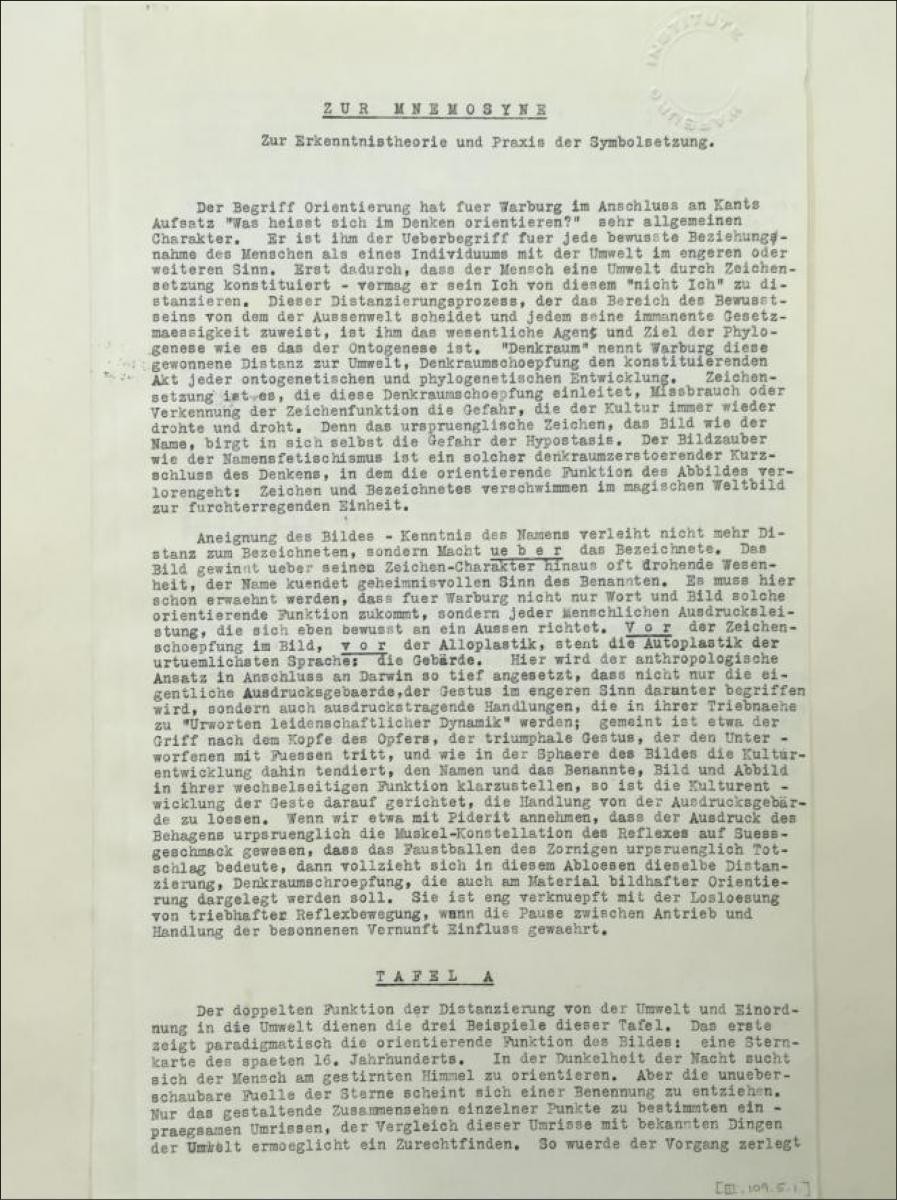
Final version of Gombrich’s Introduction to Geburtstagsatlas.
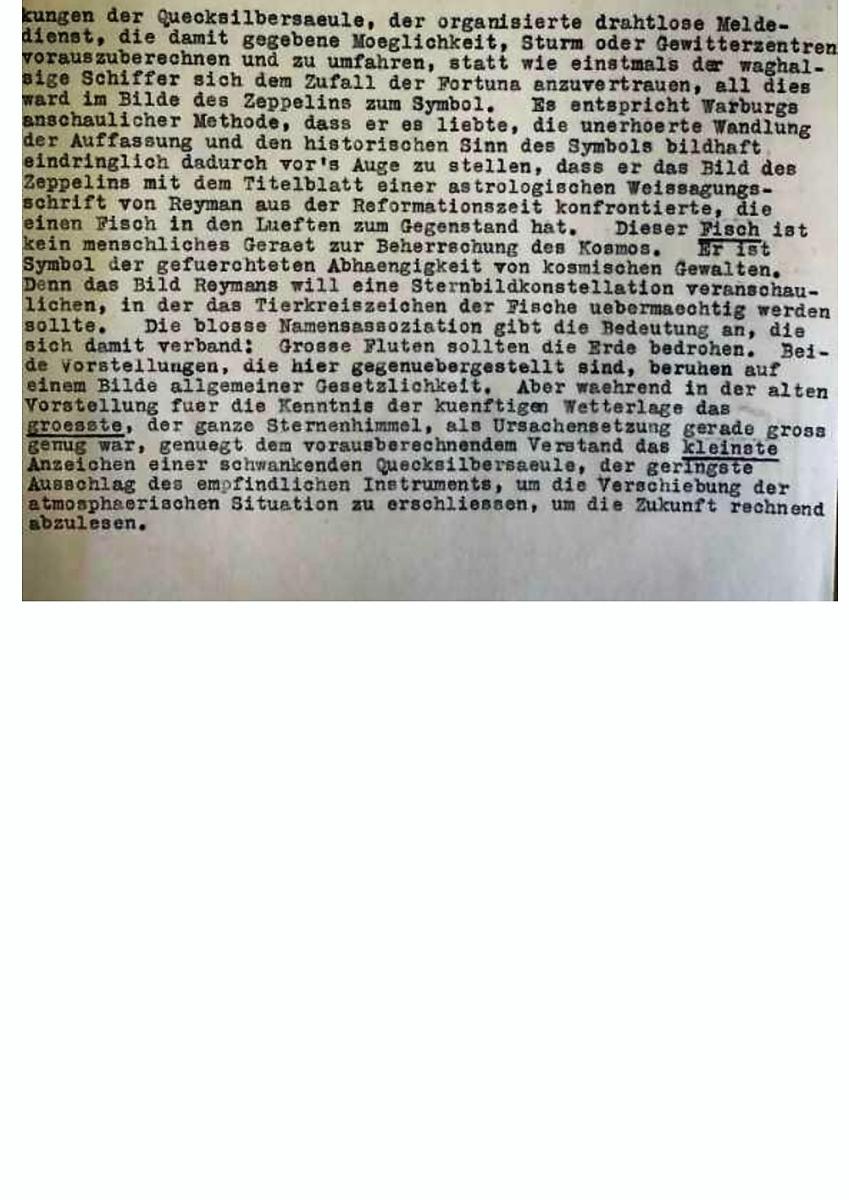
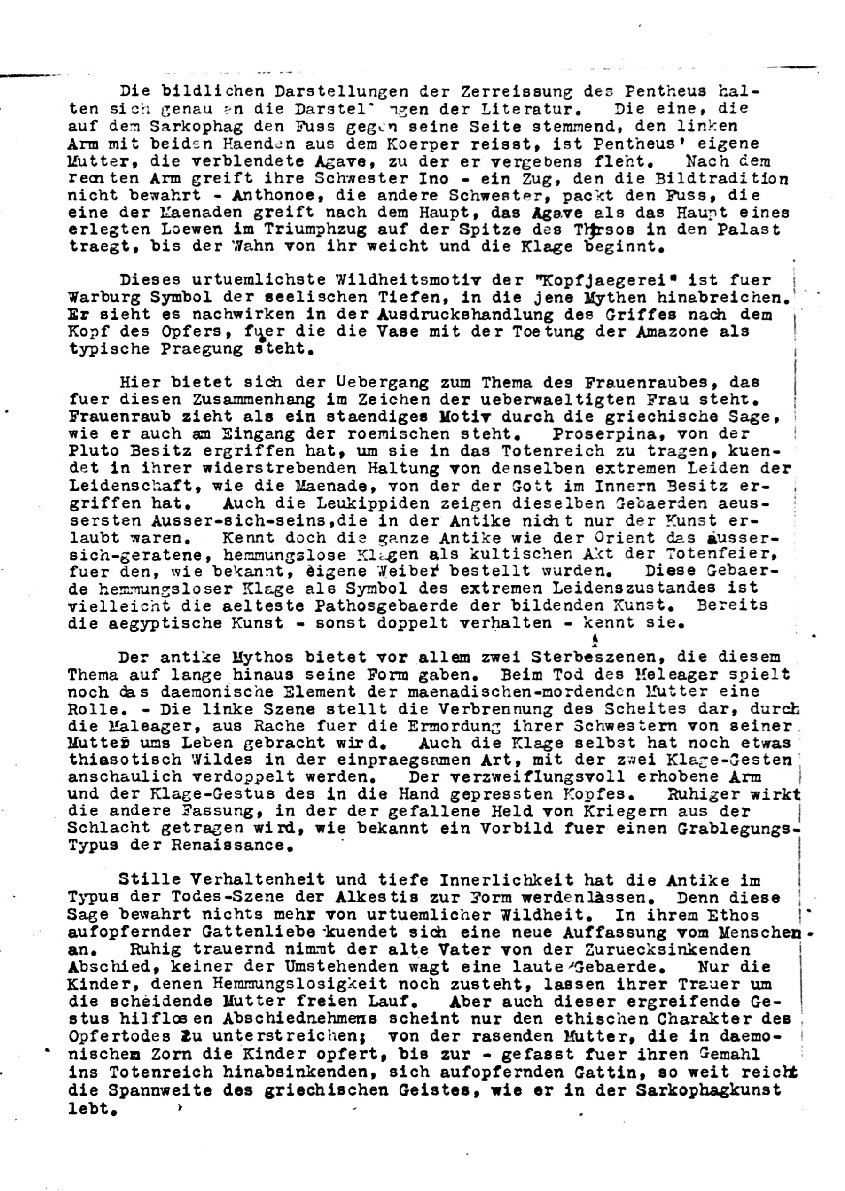
Tafel XX
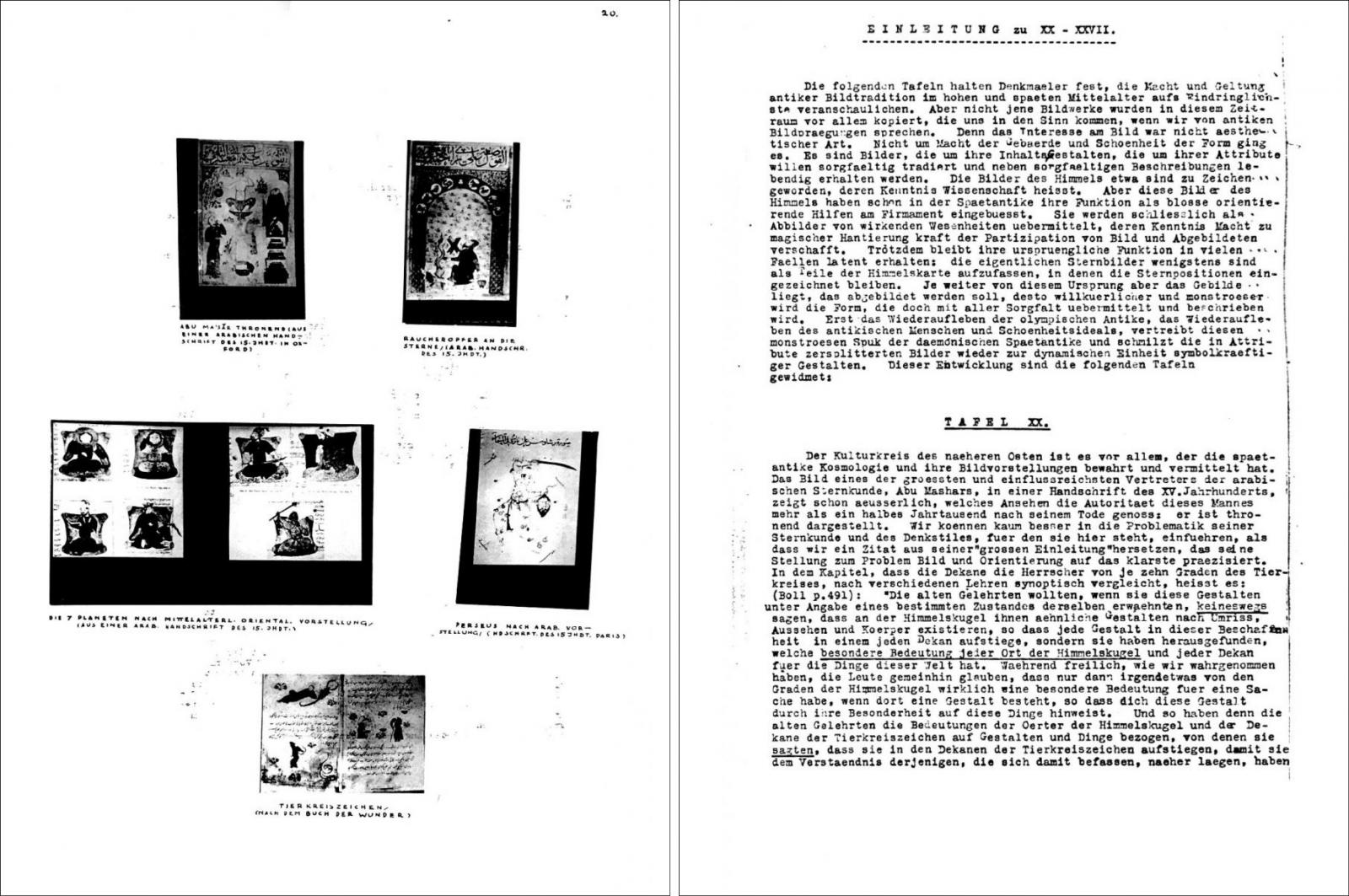
Before the accompanying text of Tafel XX, Gombrich briefly introduces the Panels XX to XXVII: Einleitung zu XX - XXVII.
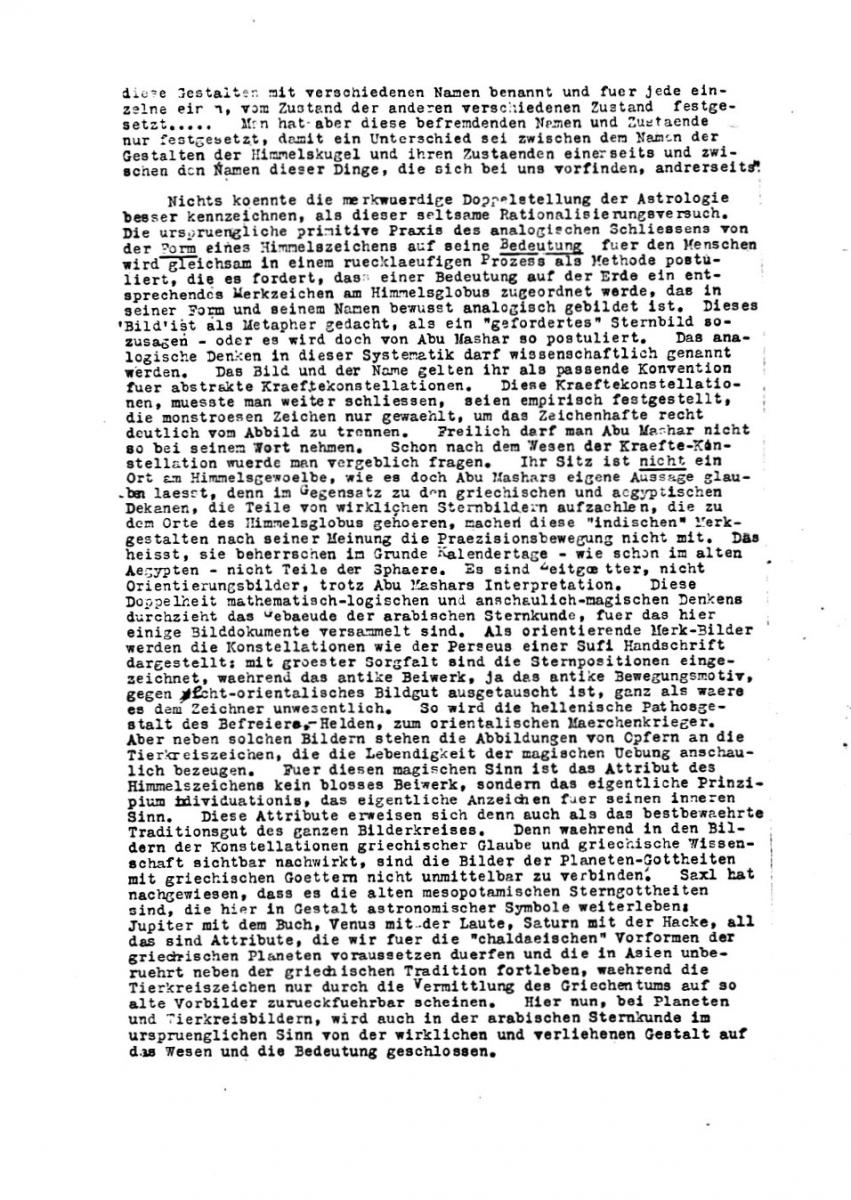
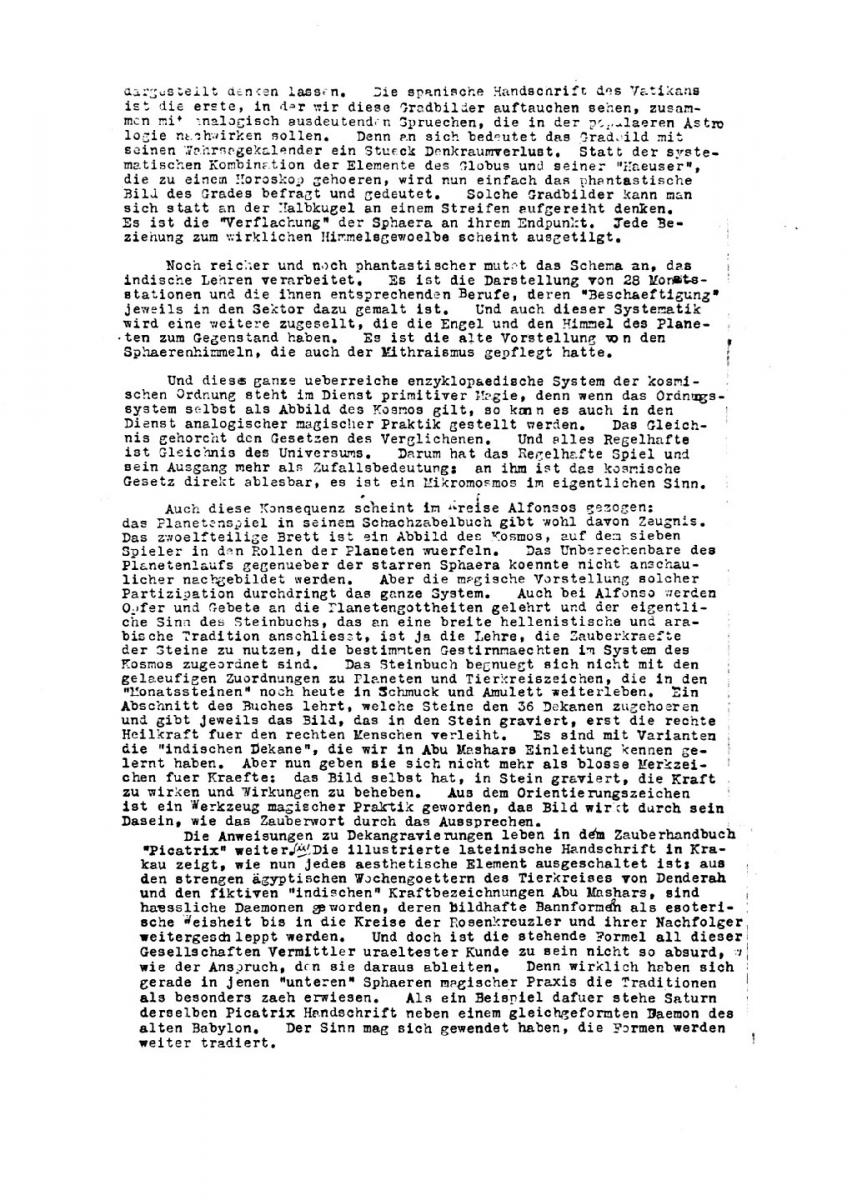
Tafel XXV
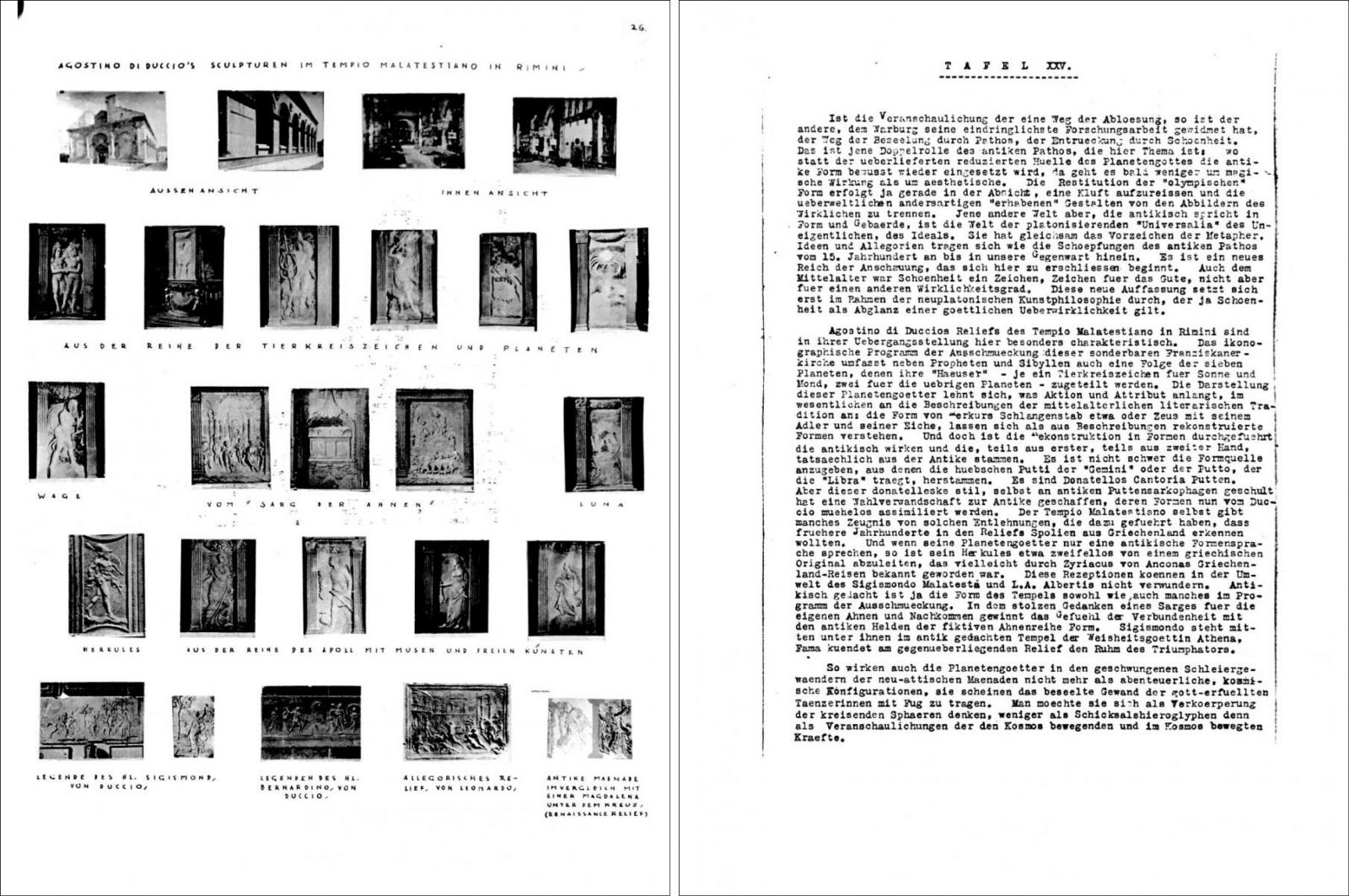
The numbering shown on the Panel is “26”. The montage, however, refers to Panel 25 0f the Mnemosyne Atlas, as the accompanying text that follows it makes clear.
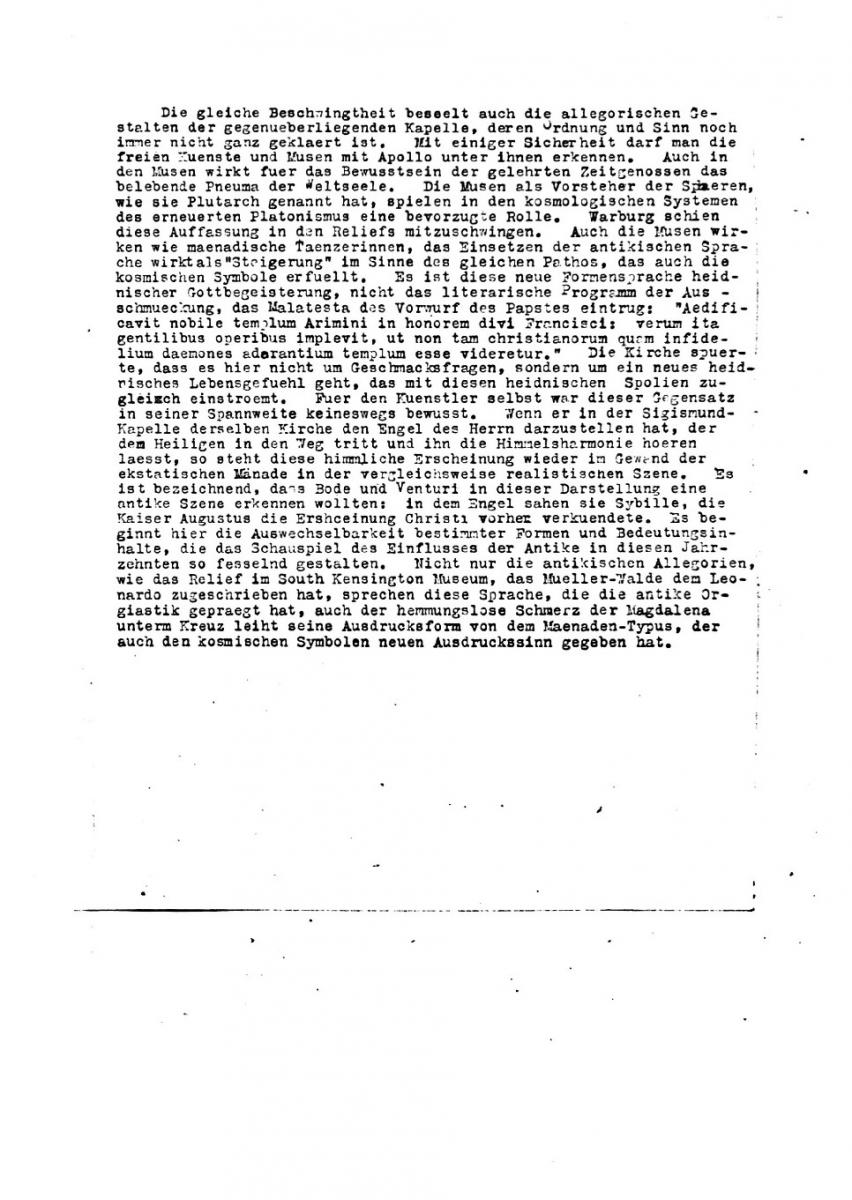
*Seminario Mnemosyne, coordinated by Monica Centanni, Anna Fressola, Maurizio Ghelardi, with Victoria Cirlot, Giacomo Calandra di Roccolino, Simone Culotta, Francesca Dell'Aglio, Silvia De Laude, Anna Ghiraldini, Clio Nicastro, Alessandra Pedersoli, Sergi Sancho Fibla, Elizabeth Thomson, Martin Warnke.
English abstract
In 1937, Ernst Gombrich, who had just joined the Warburg-Kreis in London, was commissioned to produce a private edition of the Bilderatlas. Geburtstagsatlas für Max M. Warburg, to celebrate the seventieth birthday of Aby Warburg’s brother. The operation, conceived as a private gift, was probably initiated by Gertrud Bing and Fritz Saxl, or Max himself: the undertaking was intended to satisfy the family’s wishes as they continued to believe that the Mnemosyne project could be published. Preserved in two typewritten copies - one kept in London, the other in Hamburg - the Geburtstagsatlas was for decades consigned to oblivion and still remains unpublished (see the dedicated page on The Warburg Institute website).
Gombrich’s modus operandi is very clear: he selects 24 panels (out of the 63 of the last version of the Bilderatlas Mnemosyne of 1929); removes many images from each of the panels; lays out the surviving images on a white background, in a well-balanced and hierarchical order, by modifying original formats and space relations; each of the 24 panels is furnished with a brief but condensed explanation of its main topics. Gombrich introduces his version of the Atlas with a short but charged premise; although a copy of the Einleitung to the Bilderatlas Mnemosyne written by Warburg in 1929 was available to him, he firmly disassociated himself from it, both formally and conceptually. An analysis of Gombrich’s Geburtstagsatlas throws light on the introduction to his theoretical reflections on Warburg that would be included in his seminal publication: Aby Warburg: An Intellectual Biography (London 1970). Engramma no. 153 presents a first digital edition of Gombrich’s Geburtstagsatlas, from the collation of the two typewritten copies preserved at the Warburg Institute in London and the Warburg-Haus in Hamburg.
keywords | Gombrich, Warburg-Kreis, London, Bilderatlas, Aby Warburg, Geburstagsatlas.
To cite this article: Seminario Mnemosyne, Ernst H. Gombrich, Geburtstagsatlas für Max M. Warburg (5 June 1937) First digital edition, translated by E. Thomson, “La Rivista di Engramma” n. 153, febbraio 2018, pp. 13-76 | PDF
